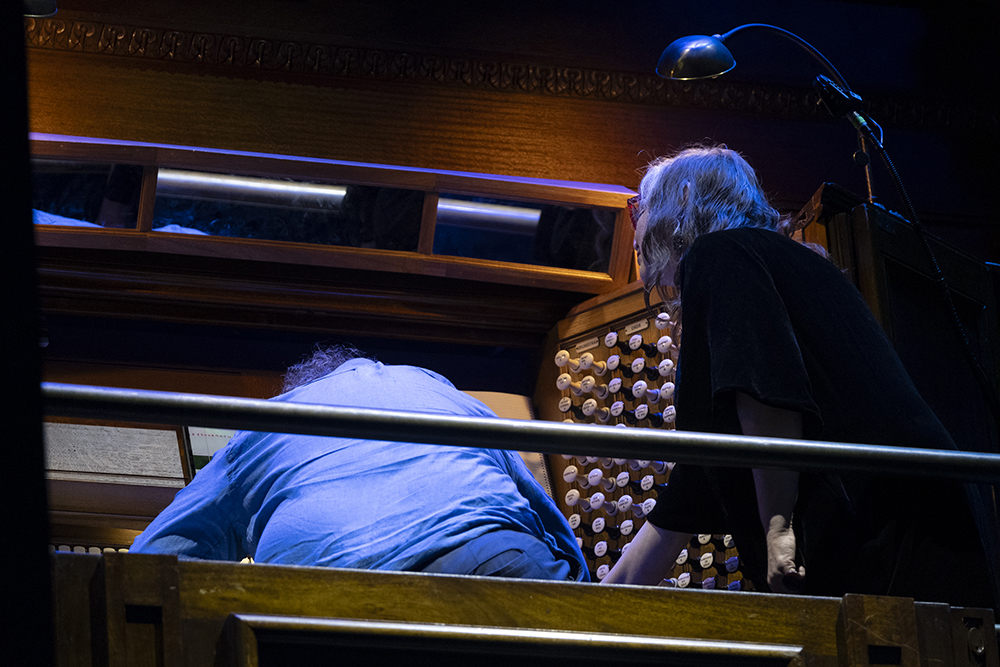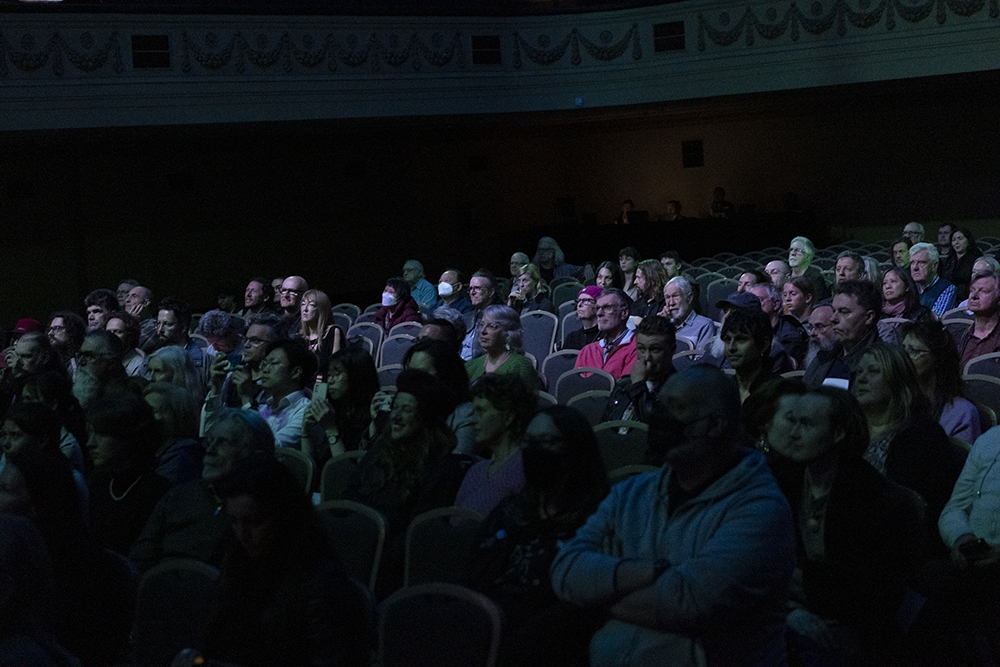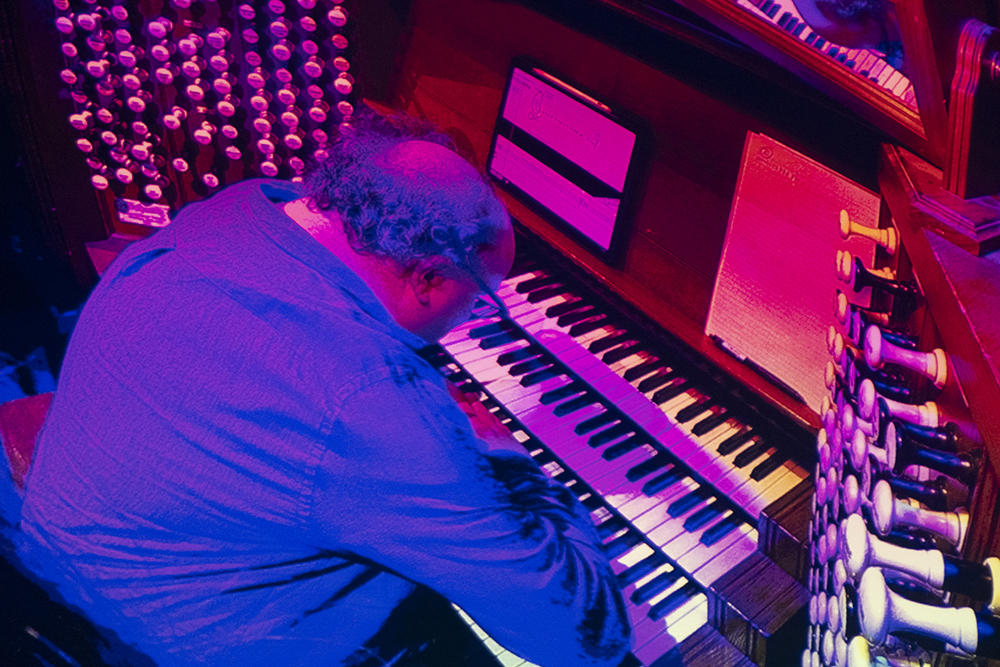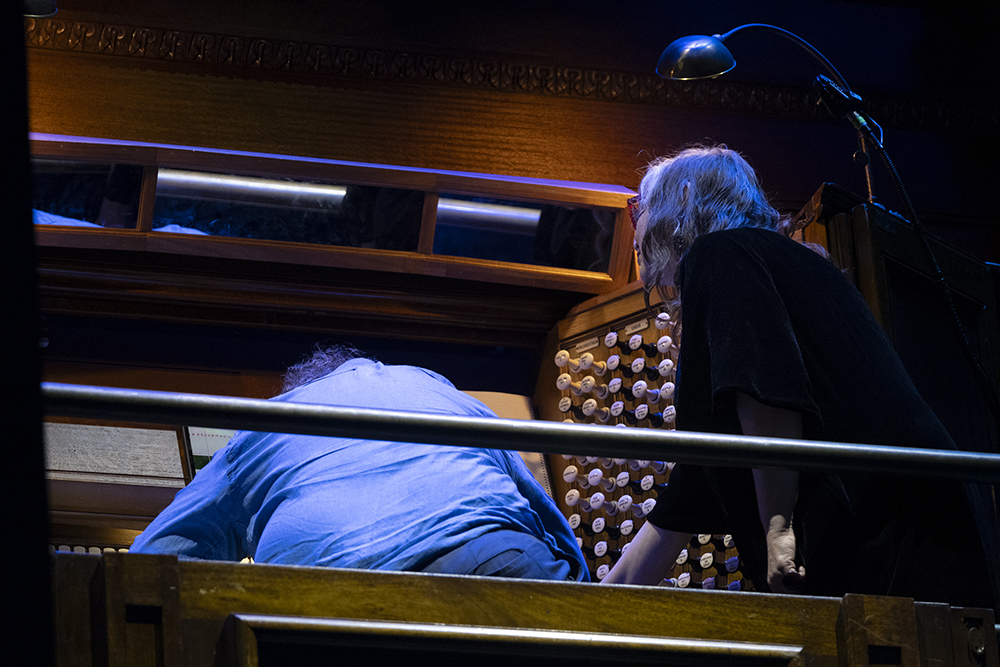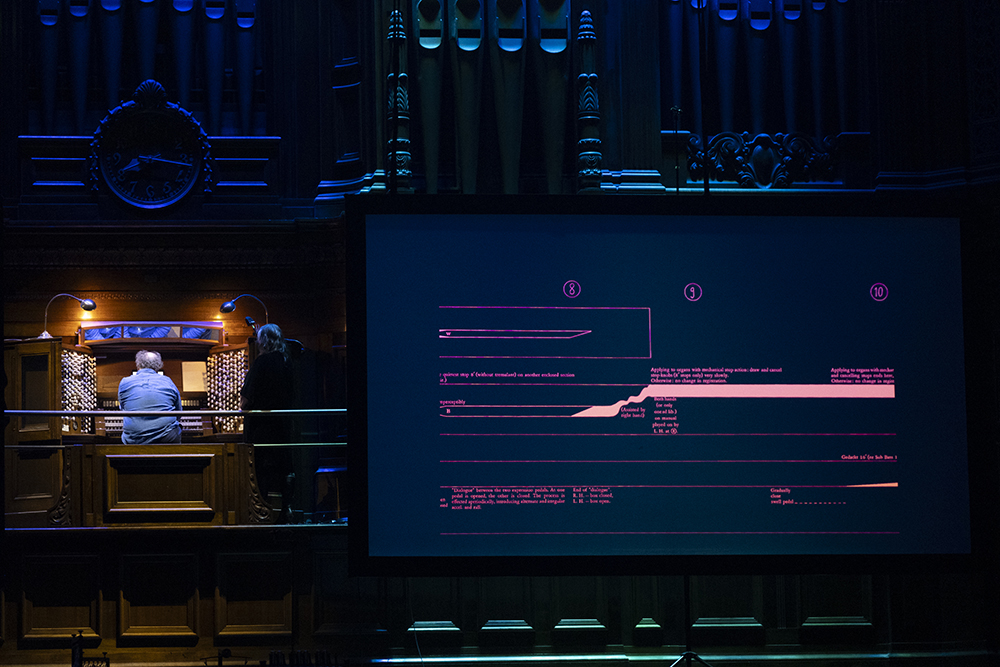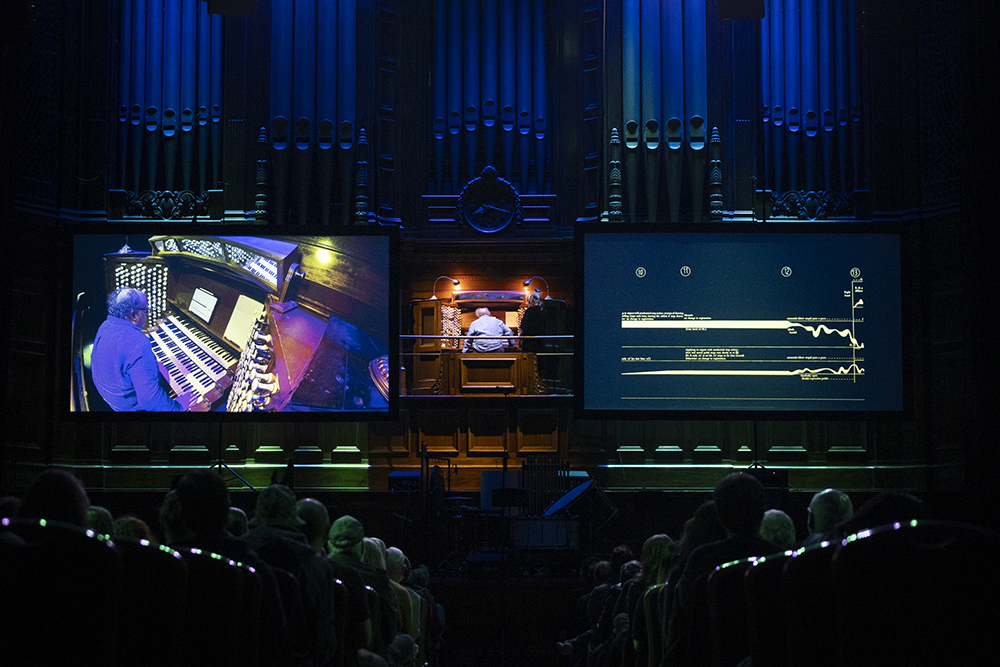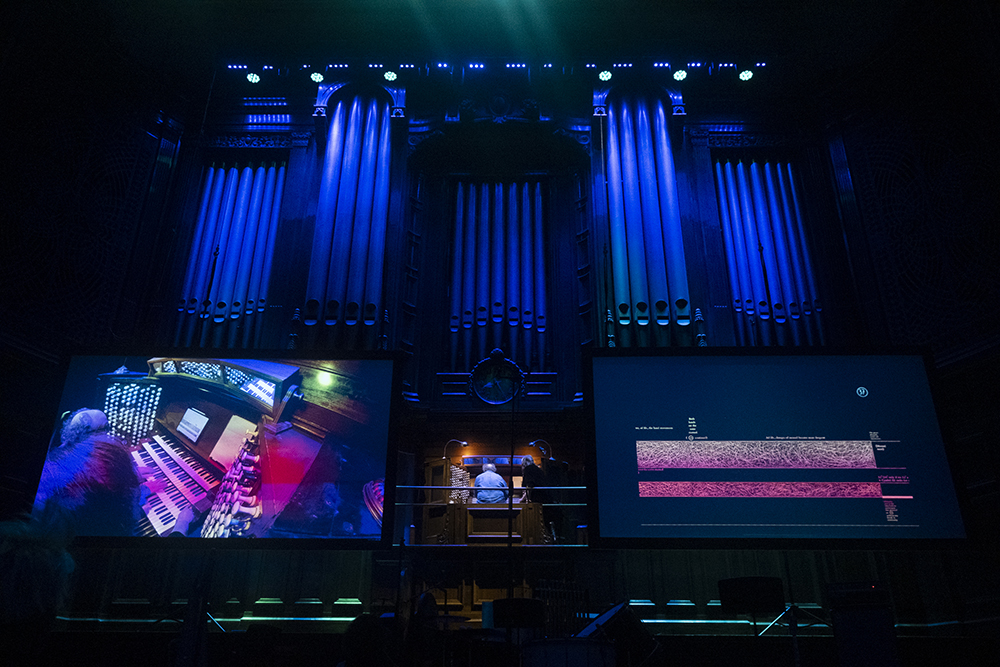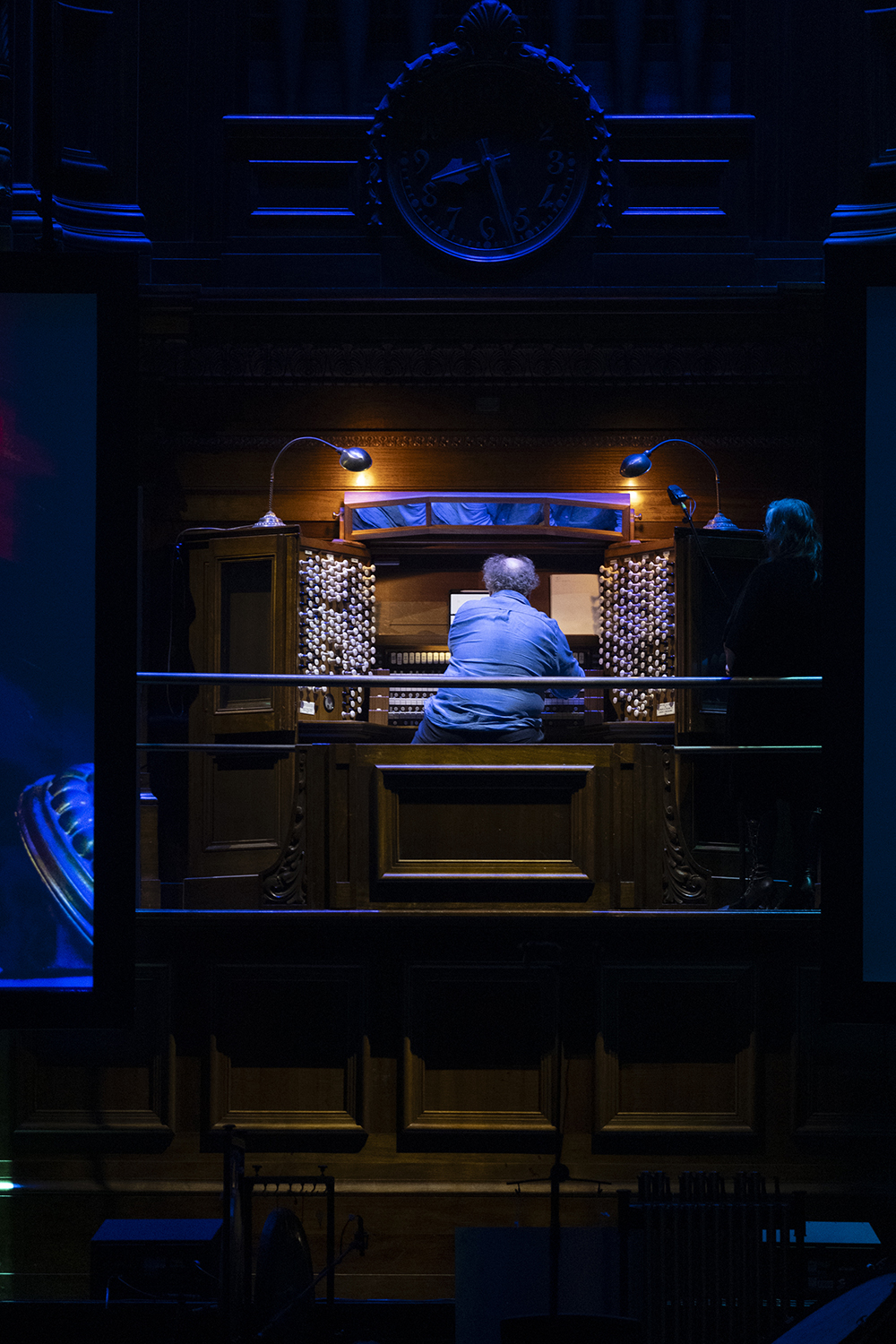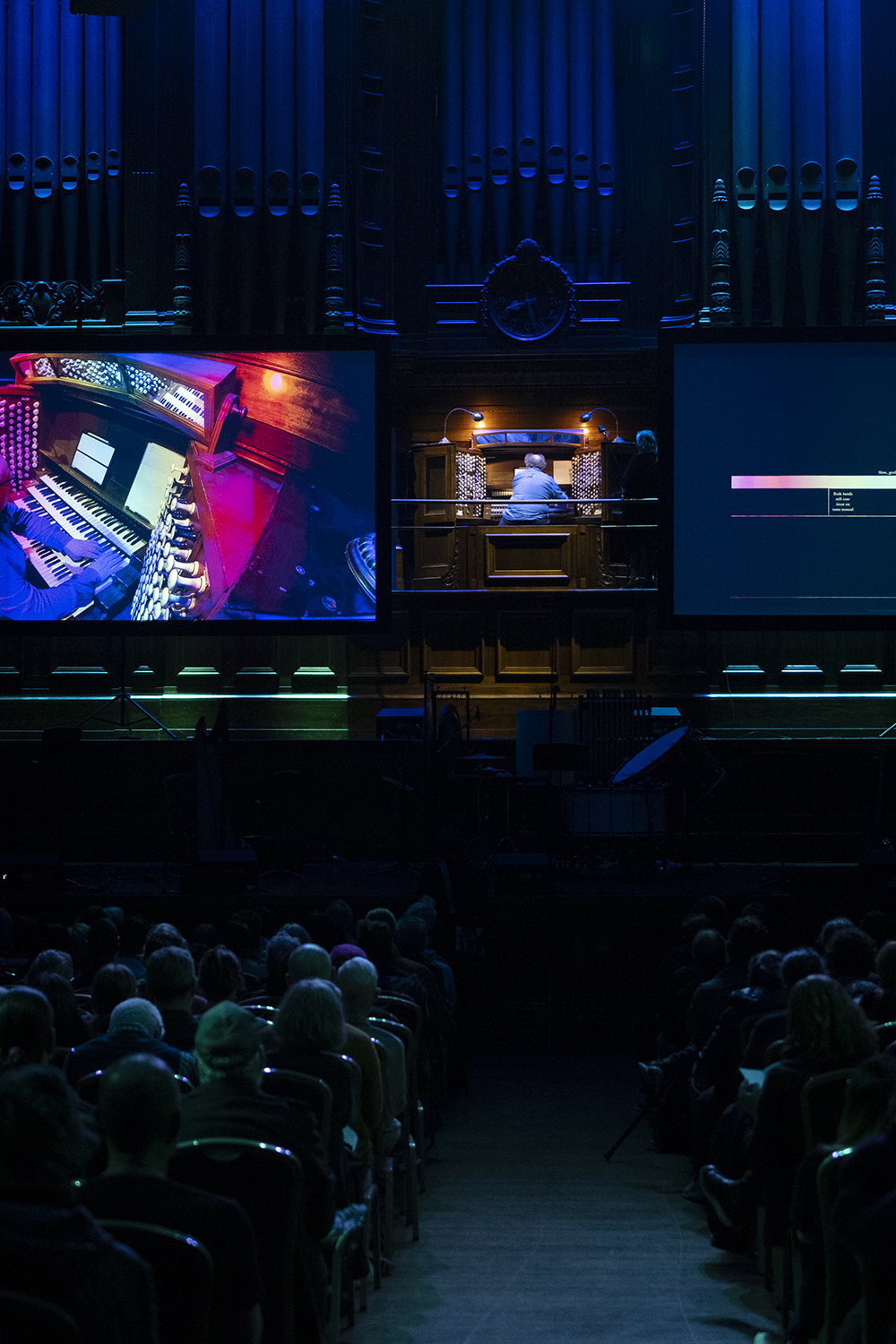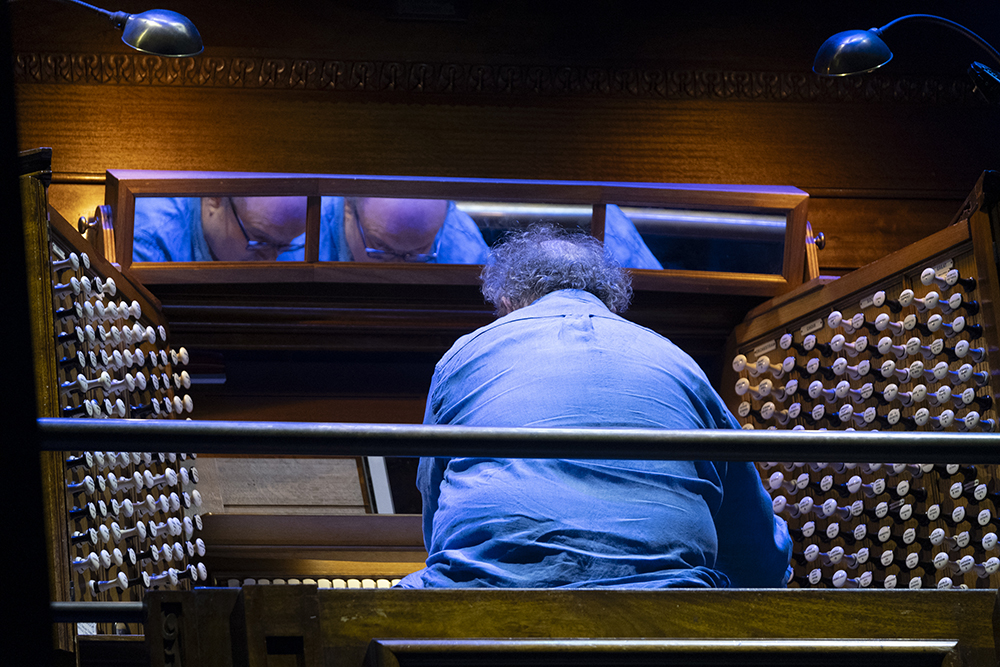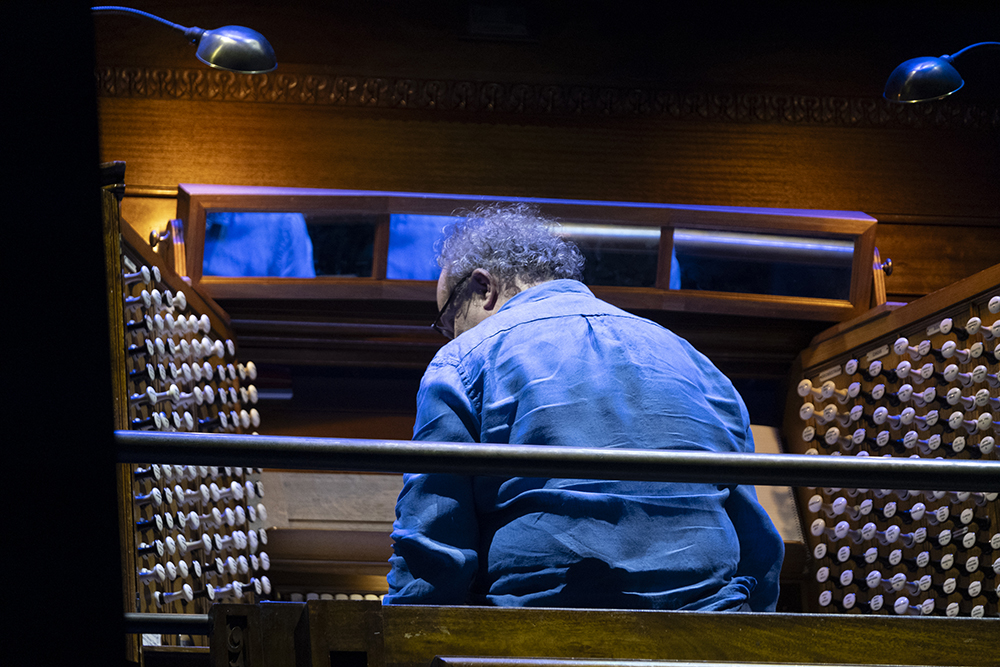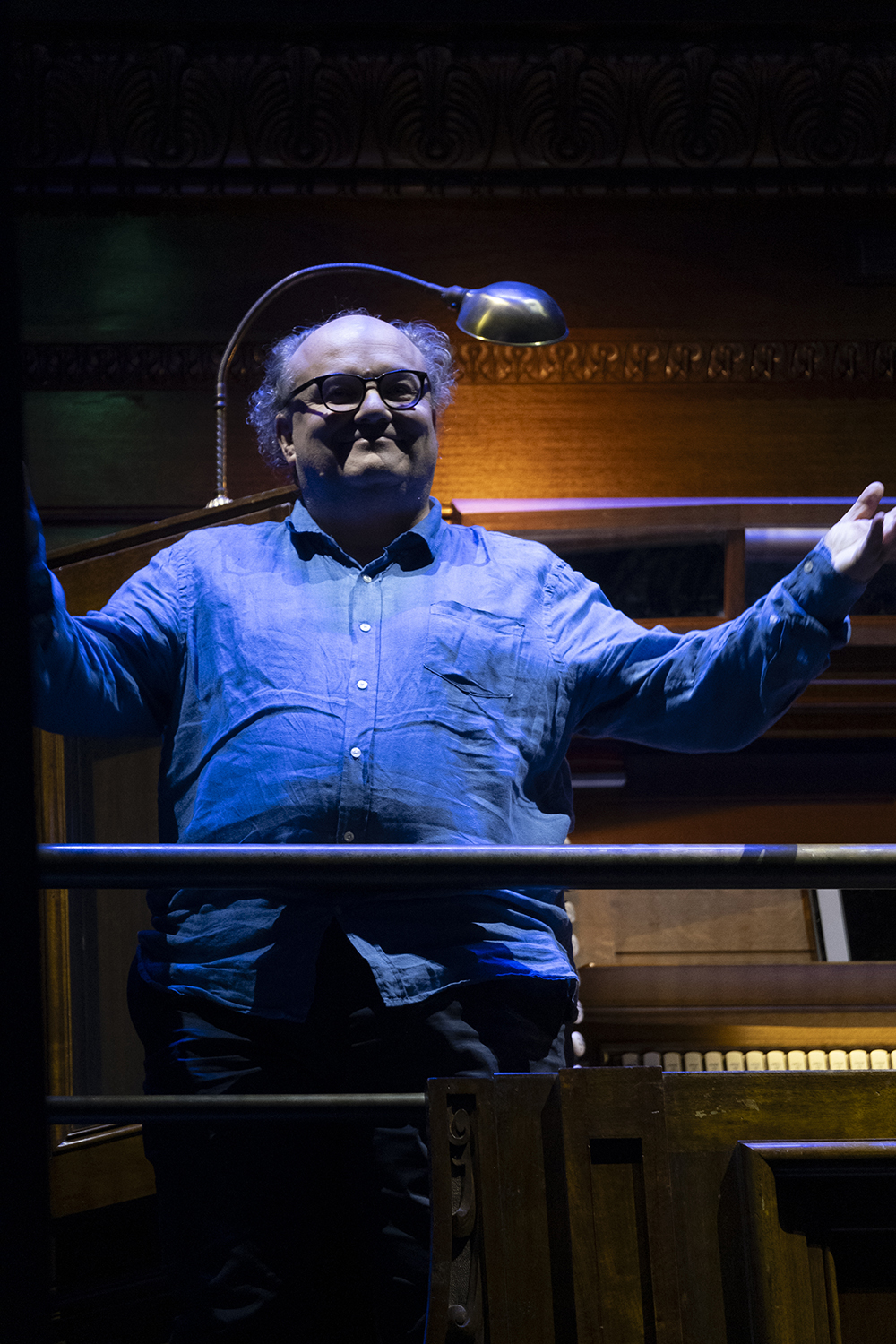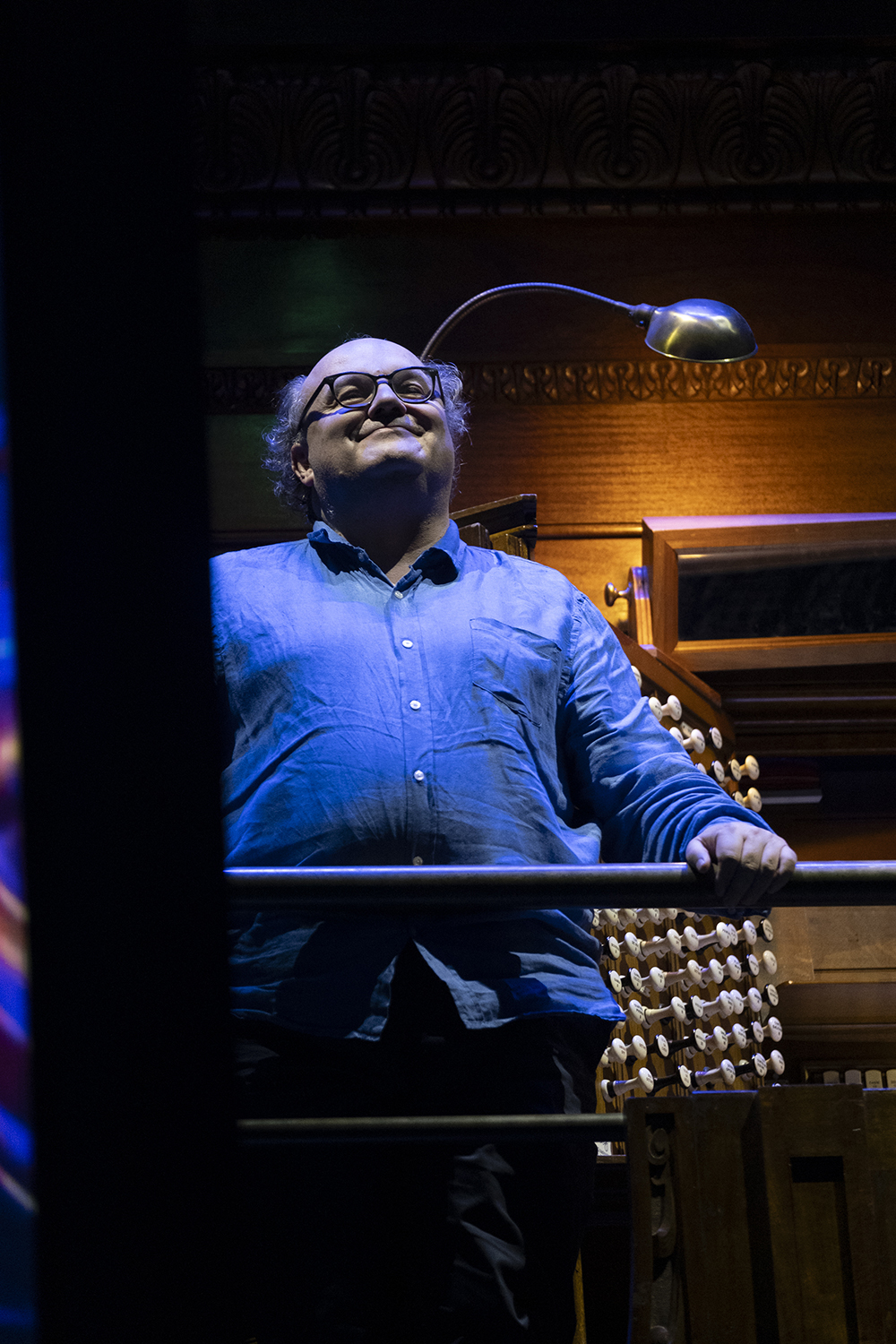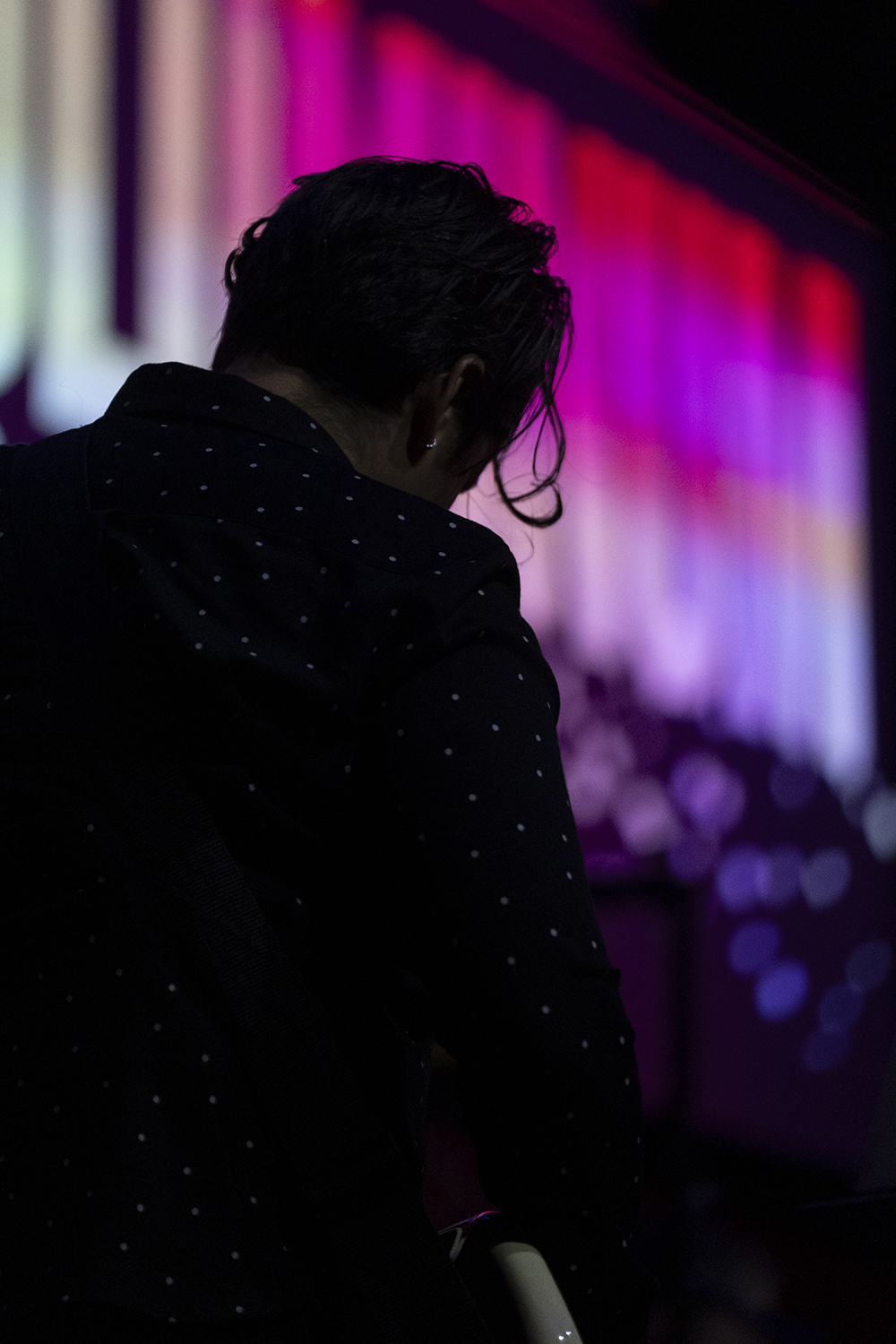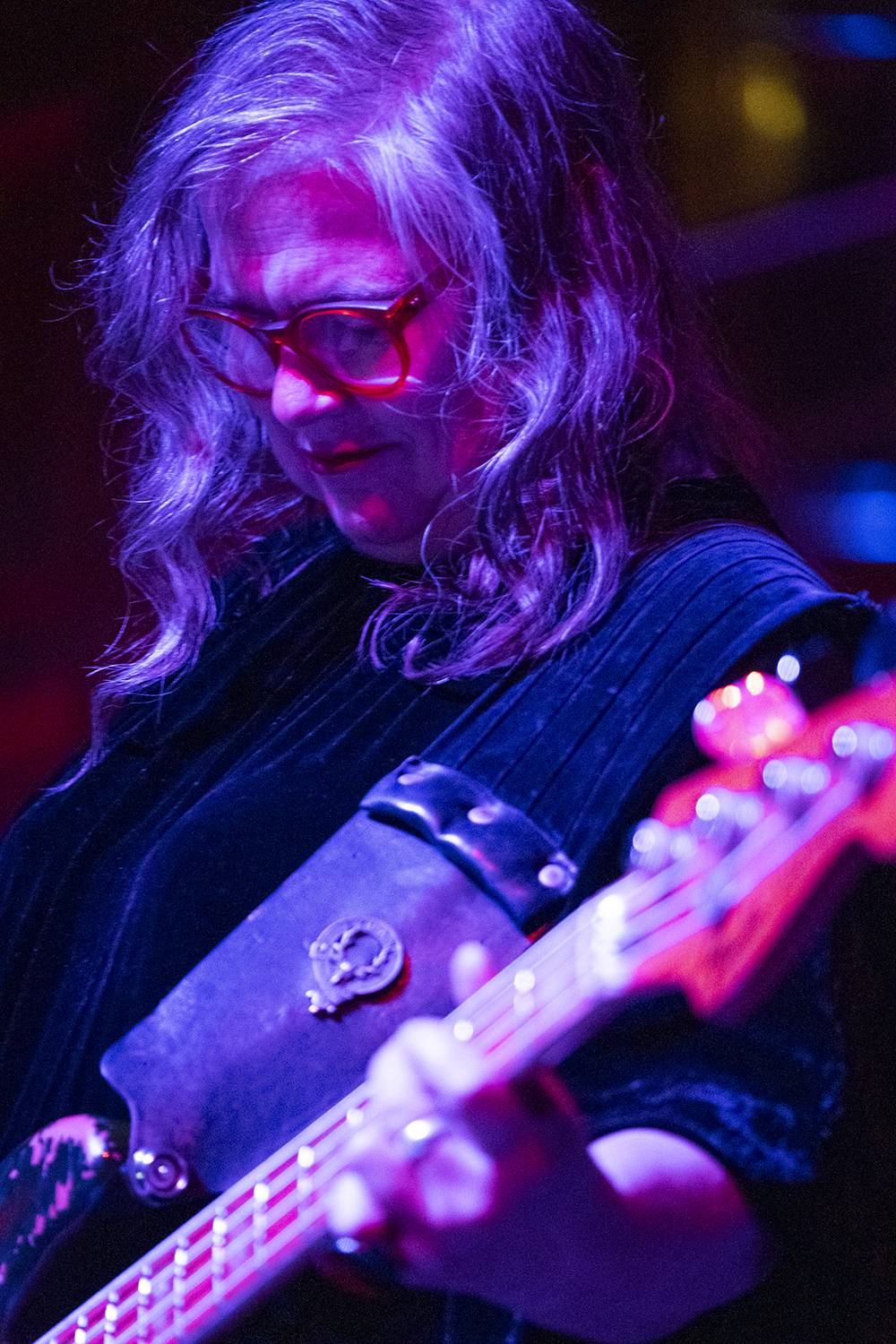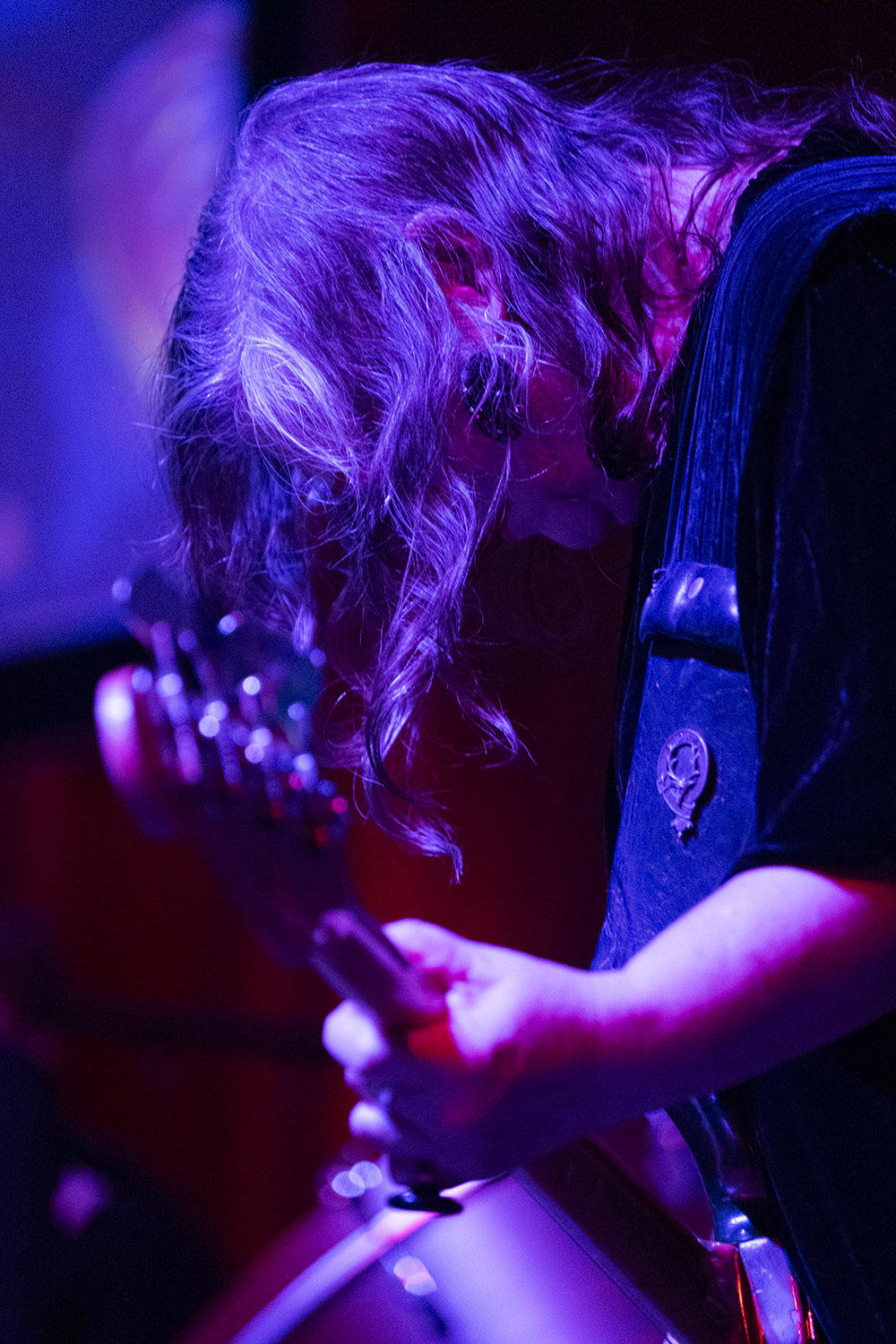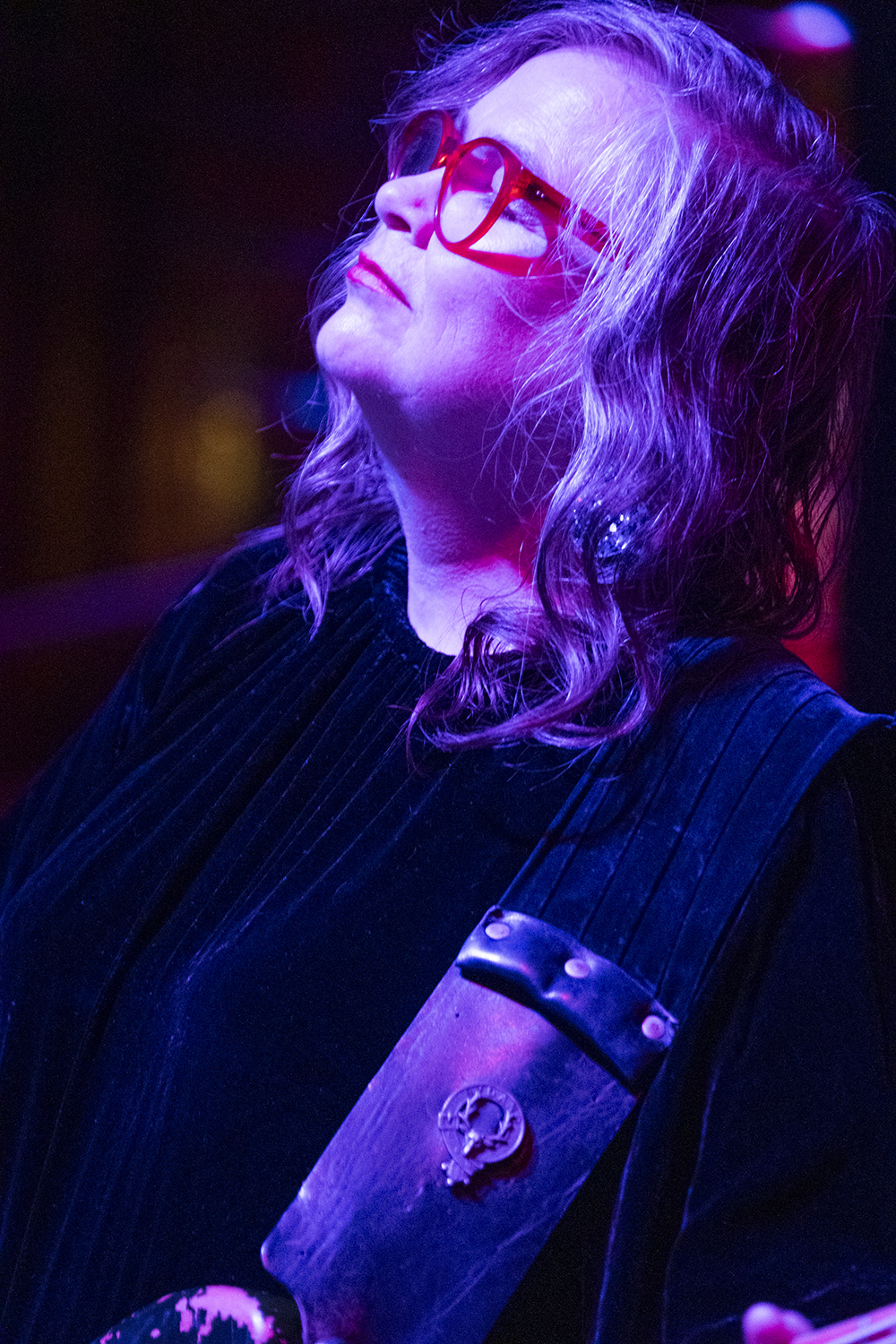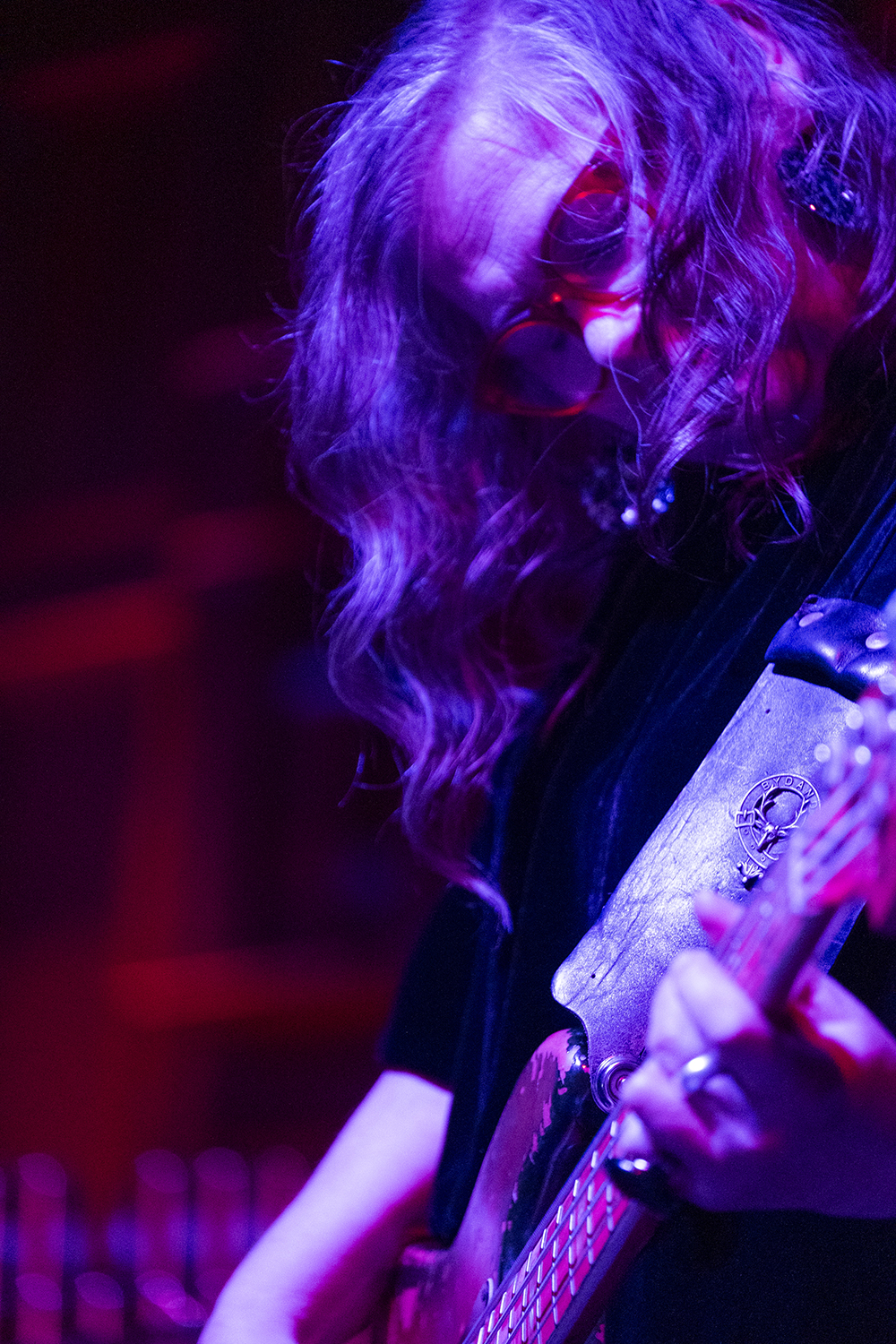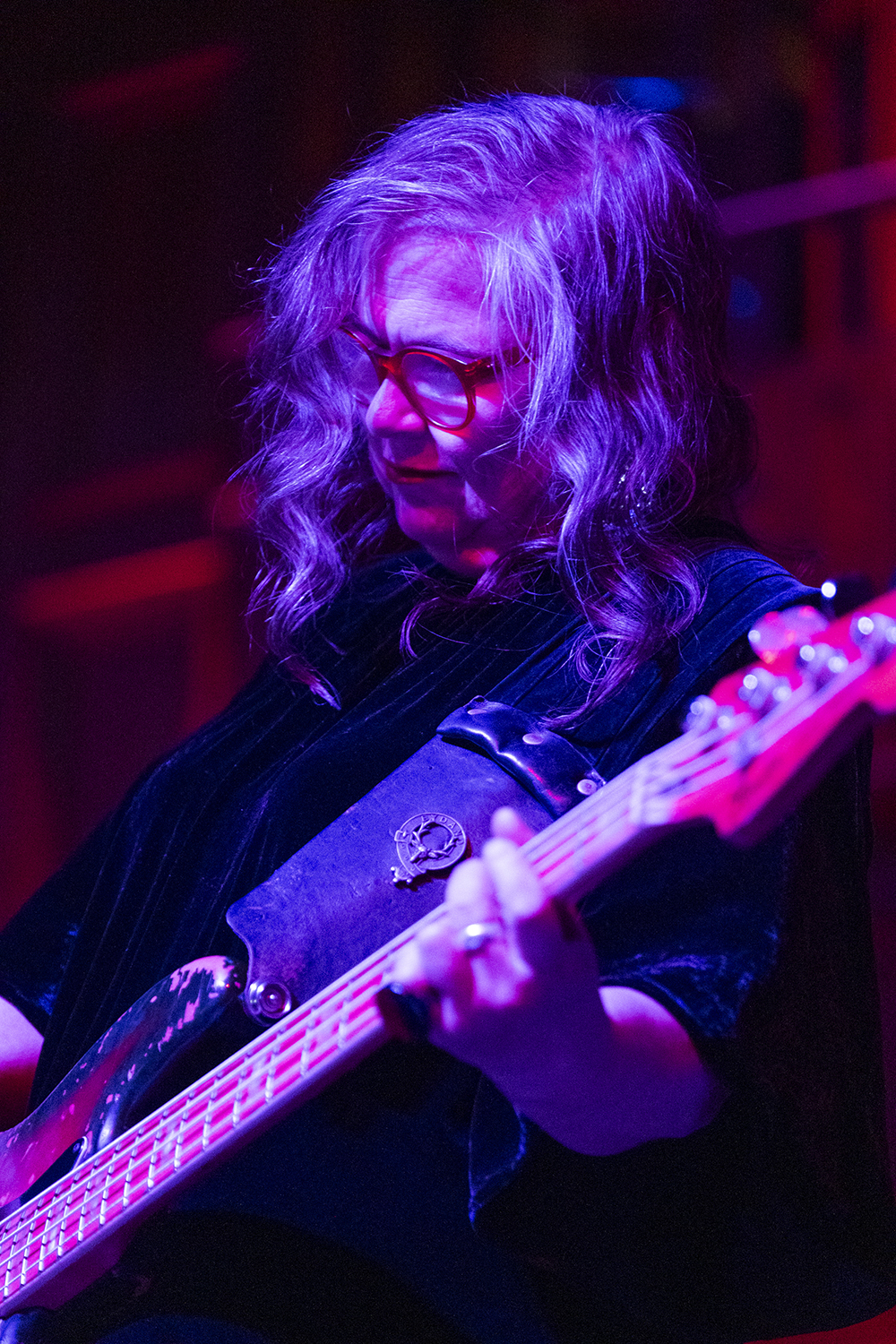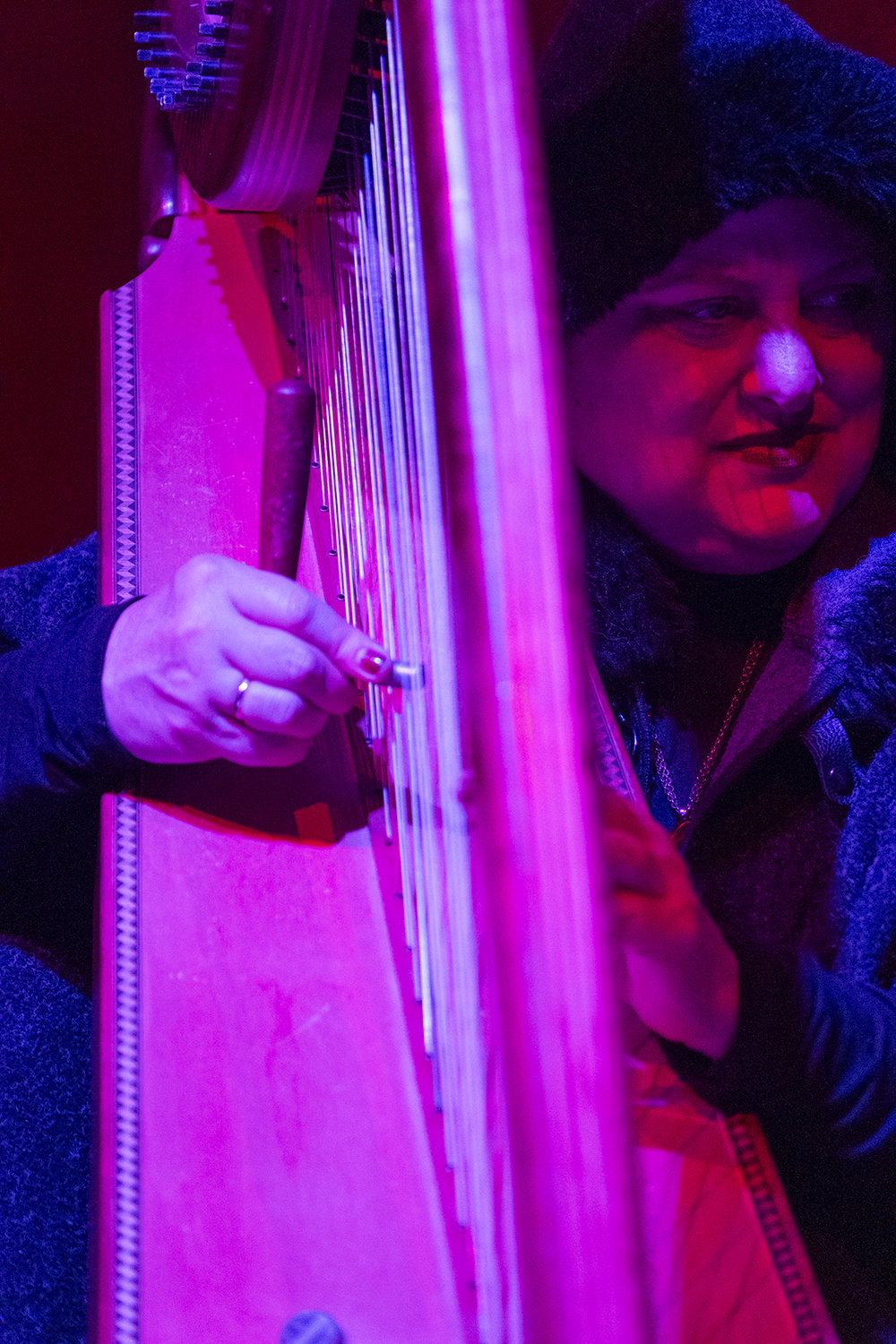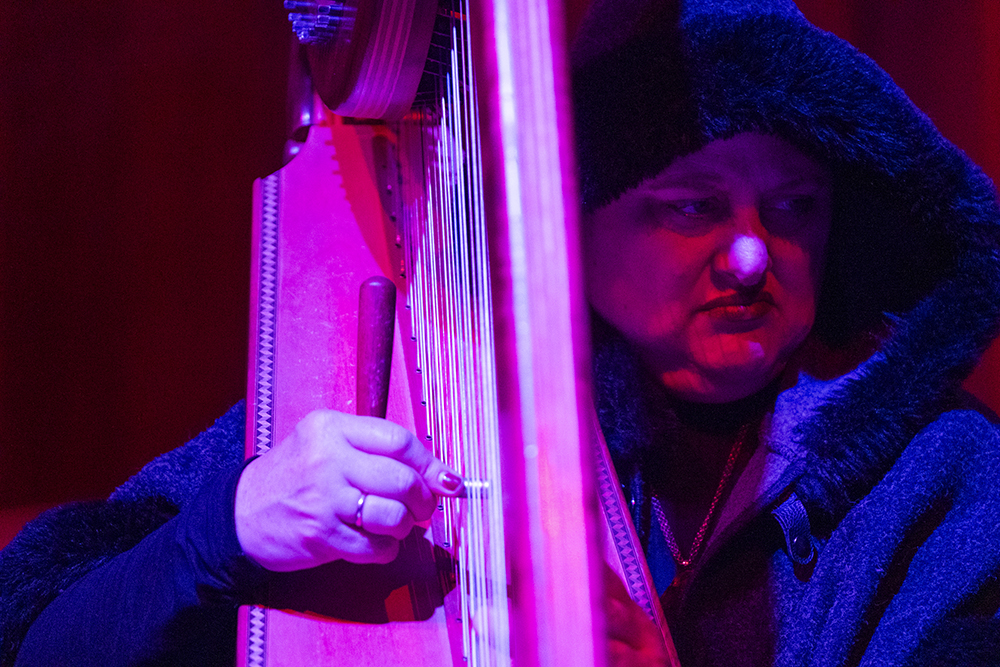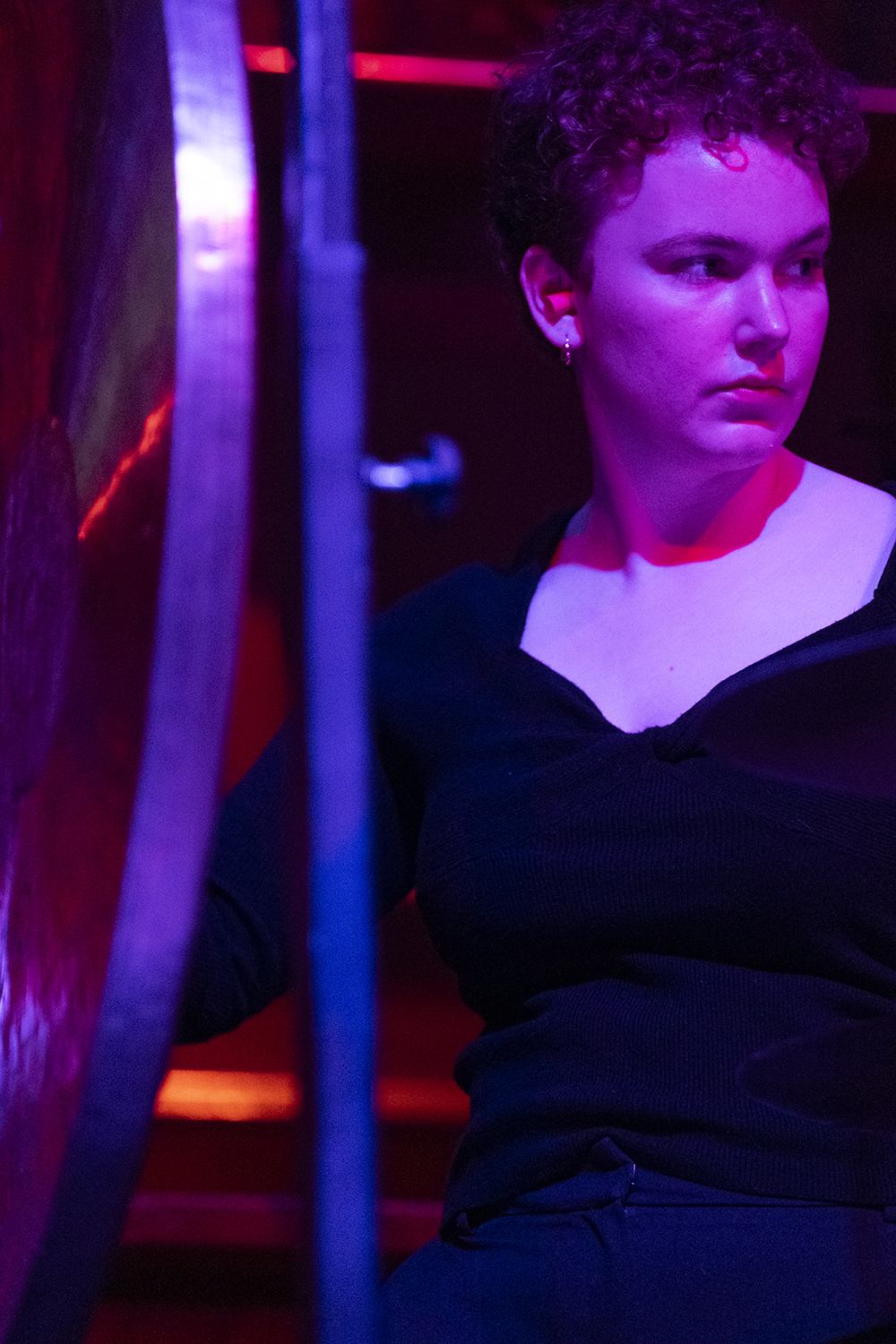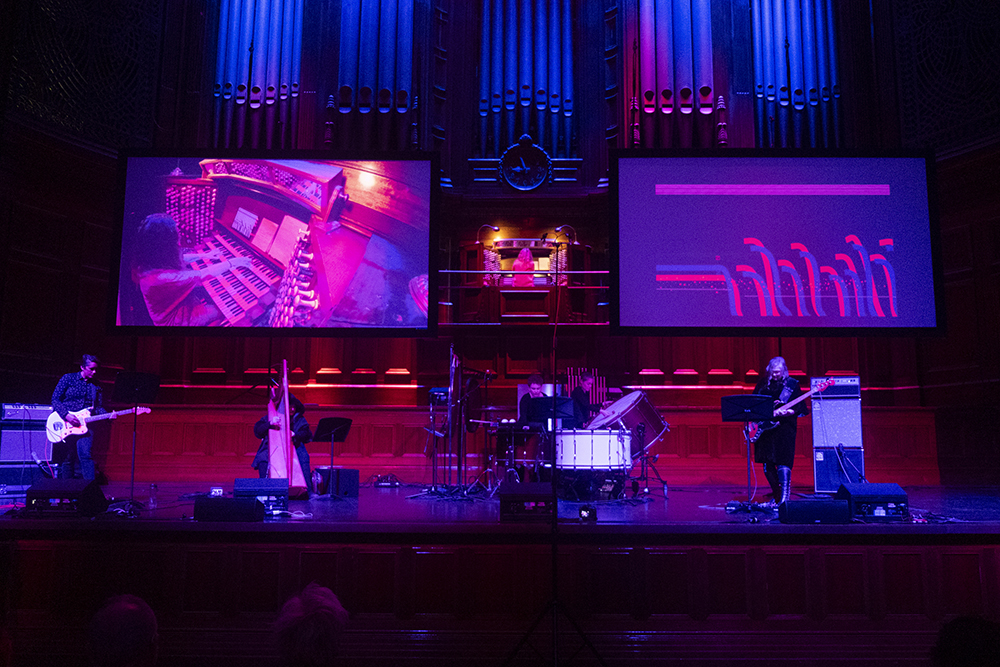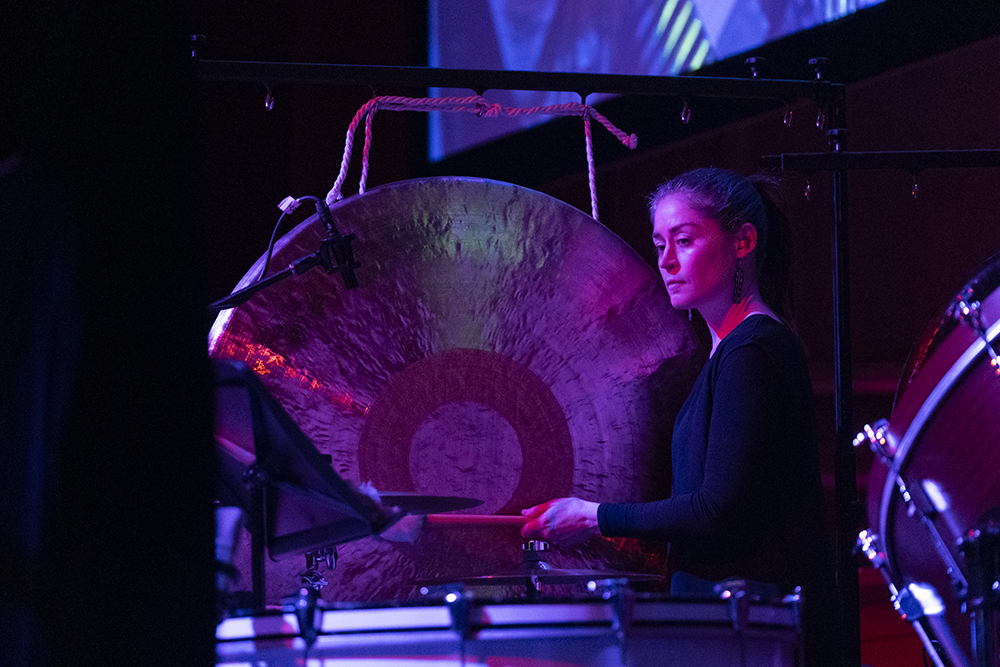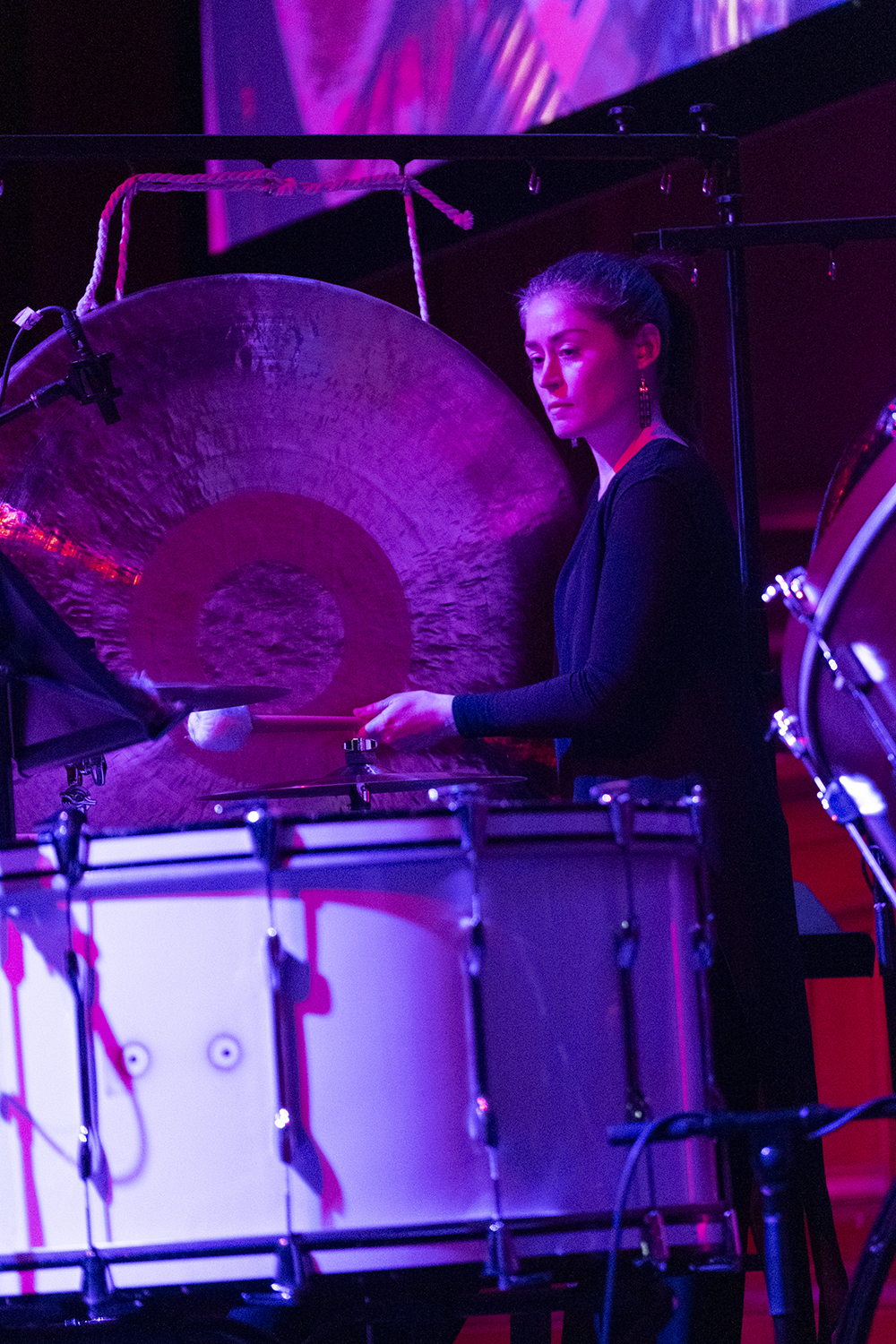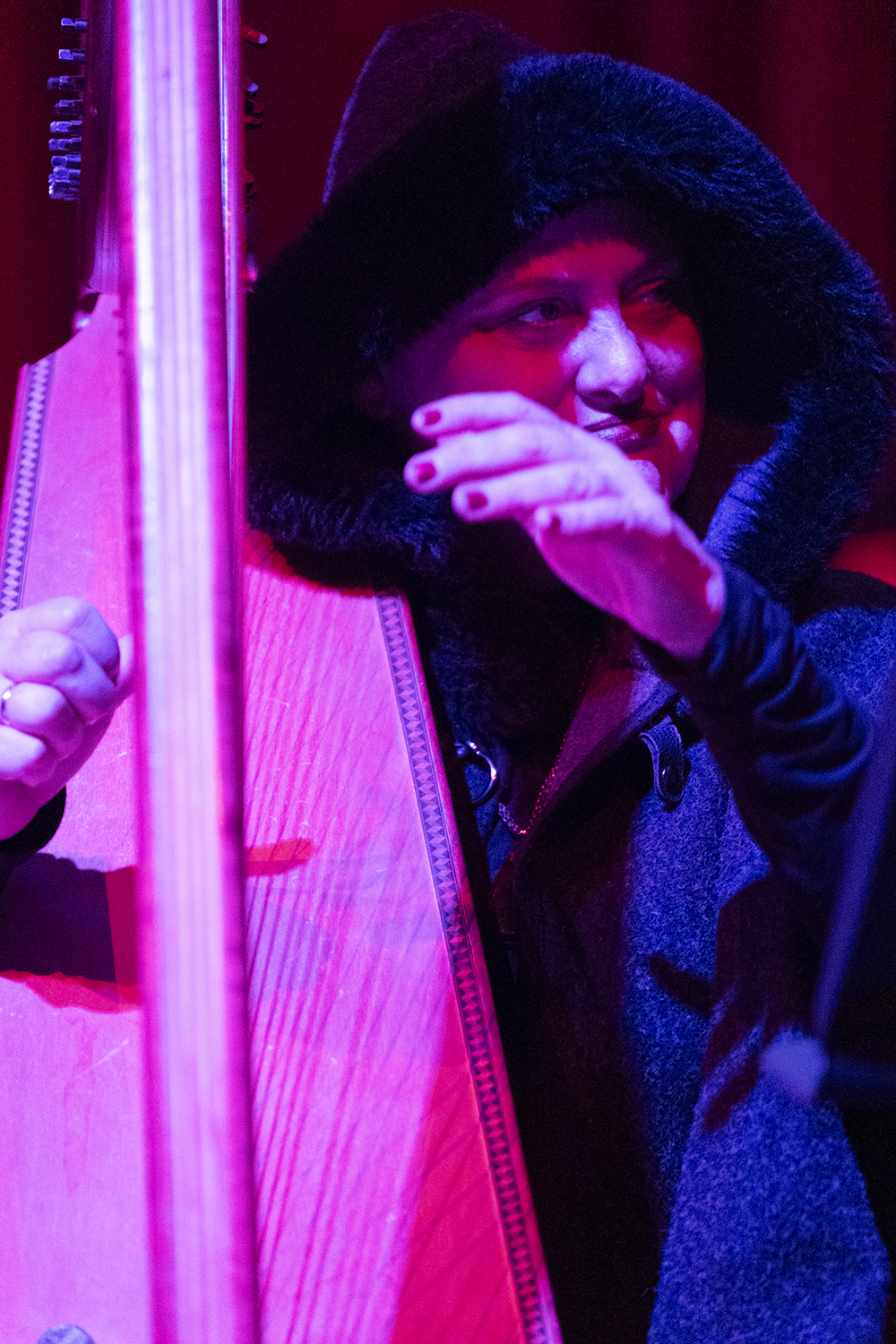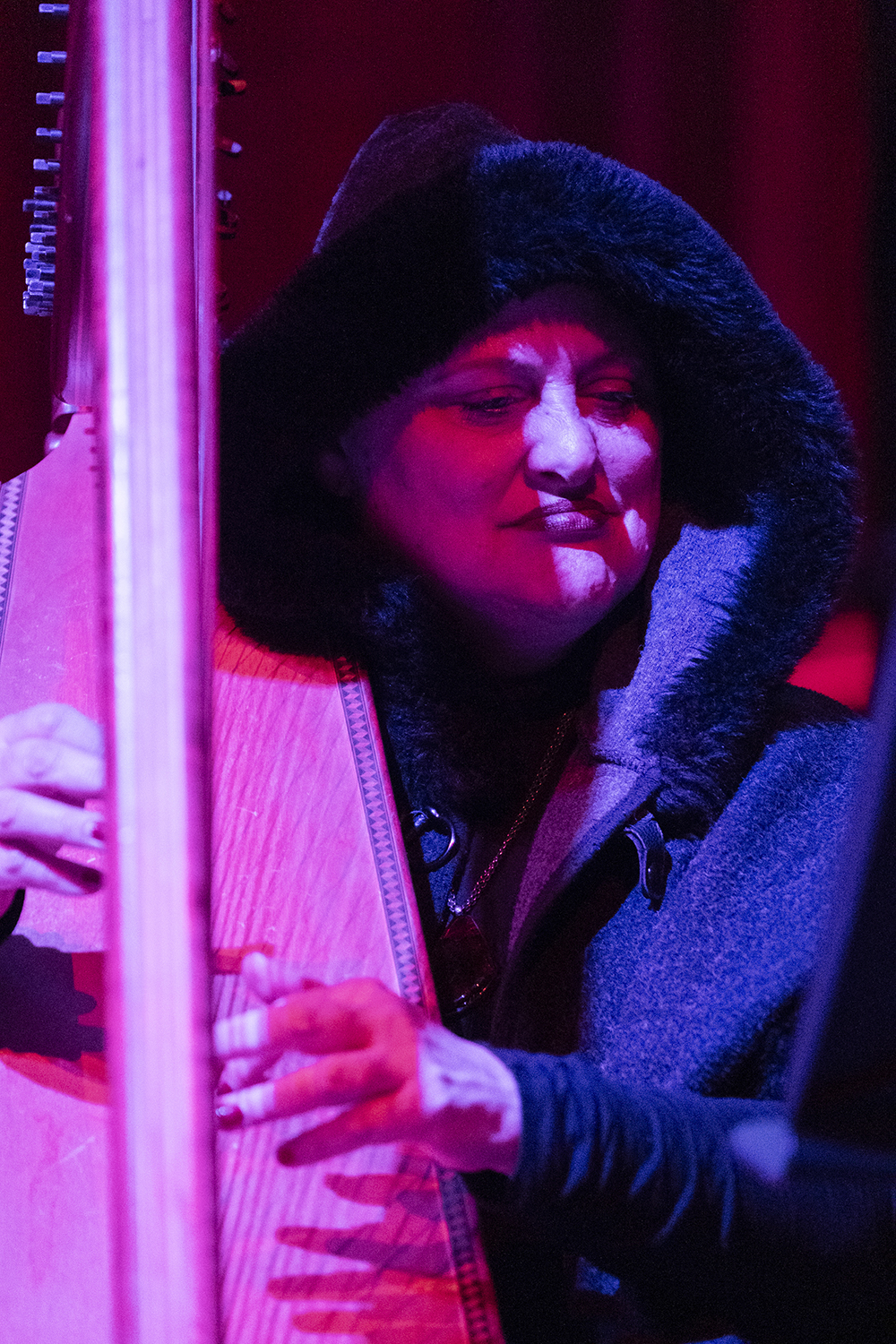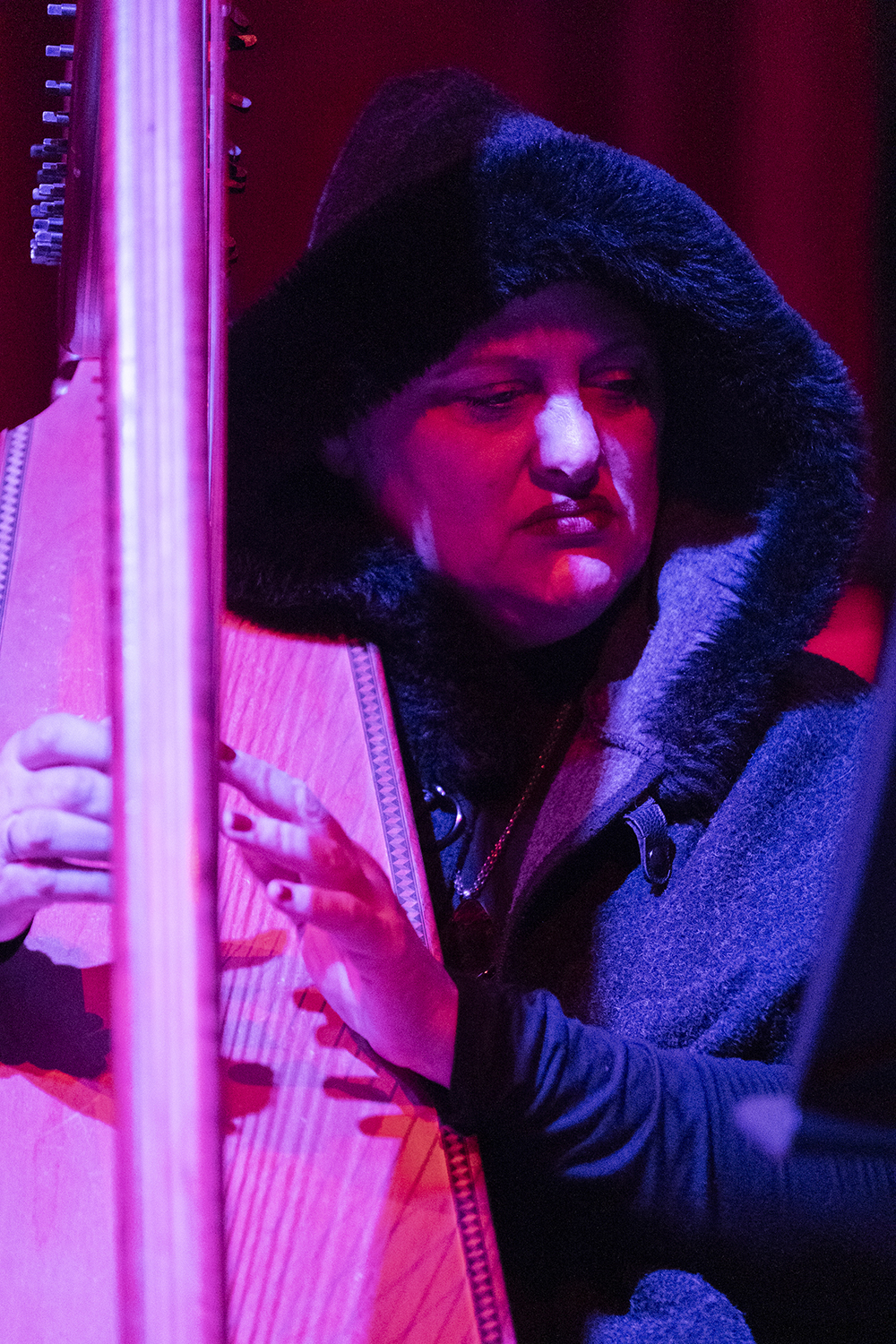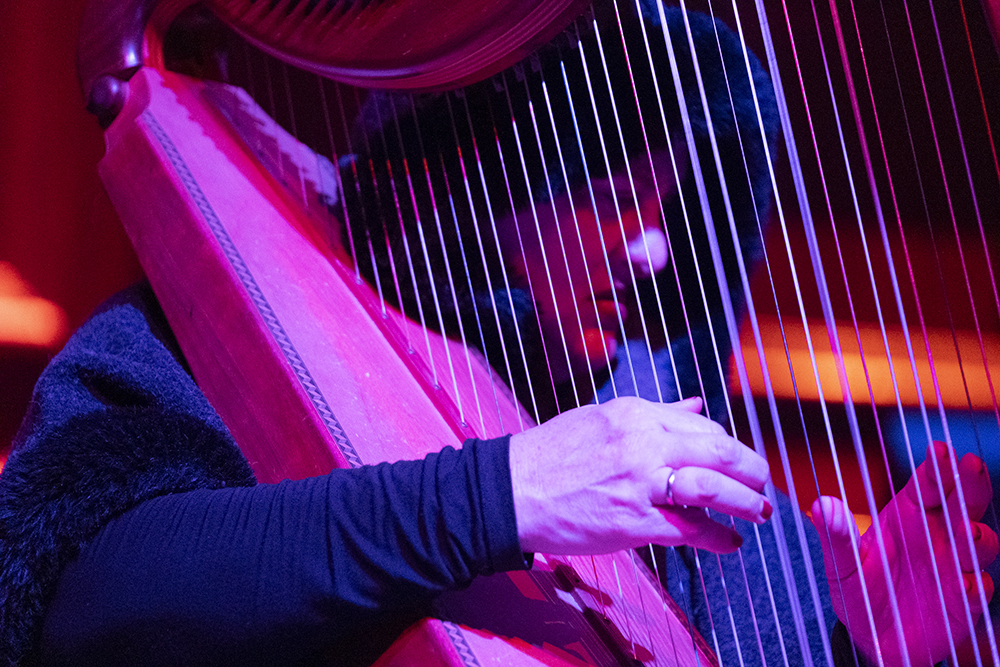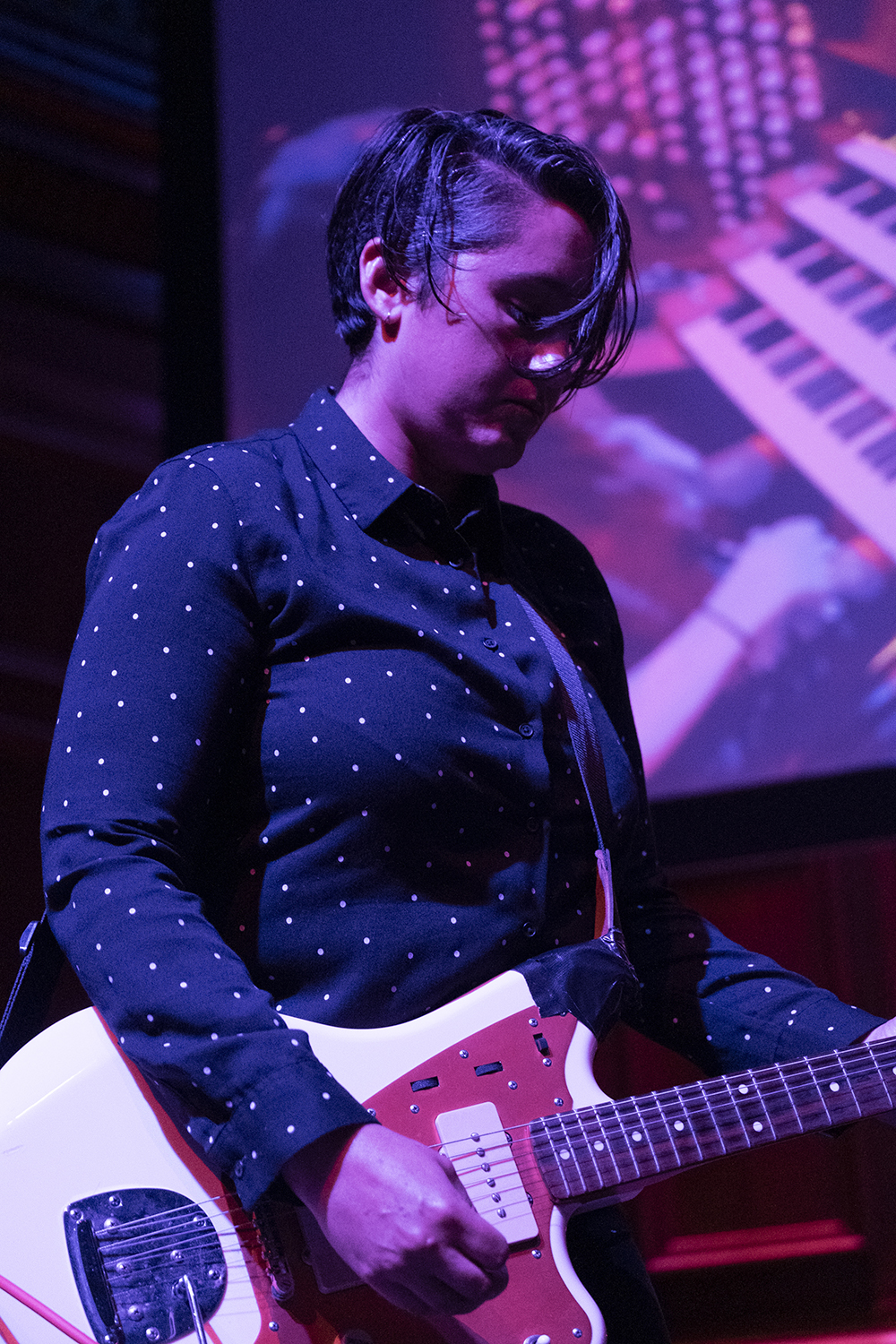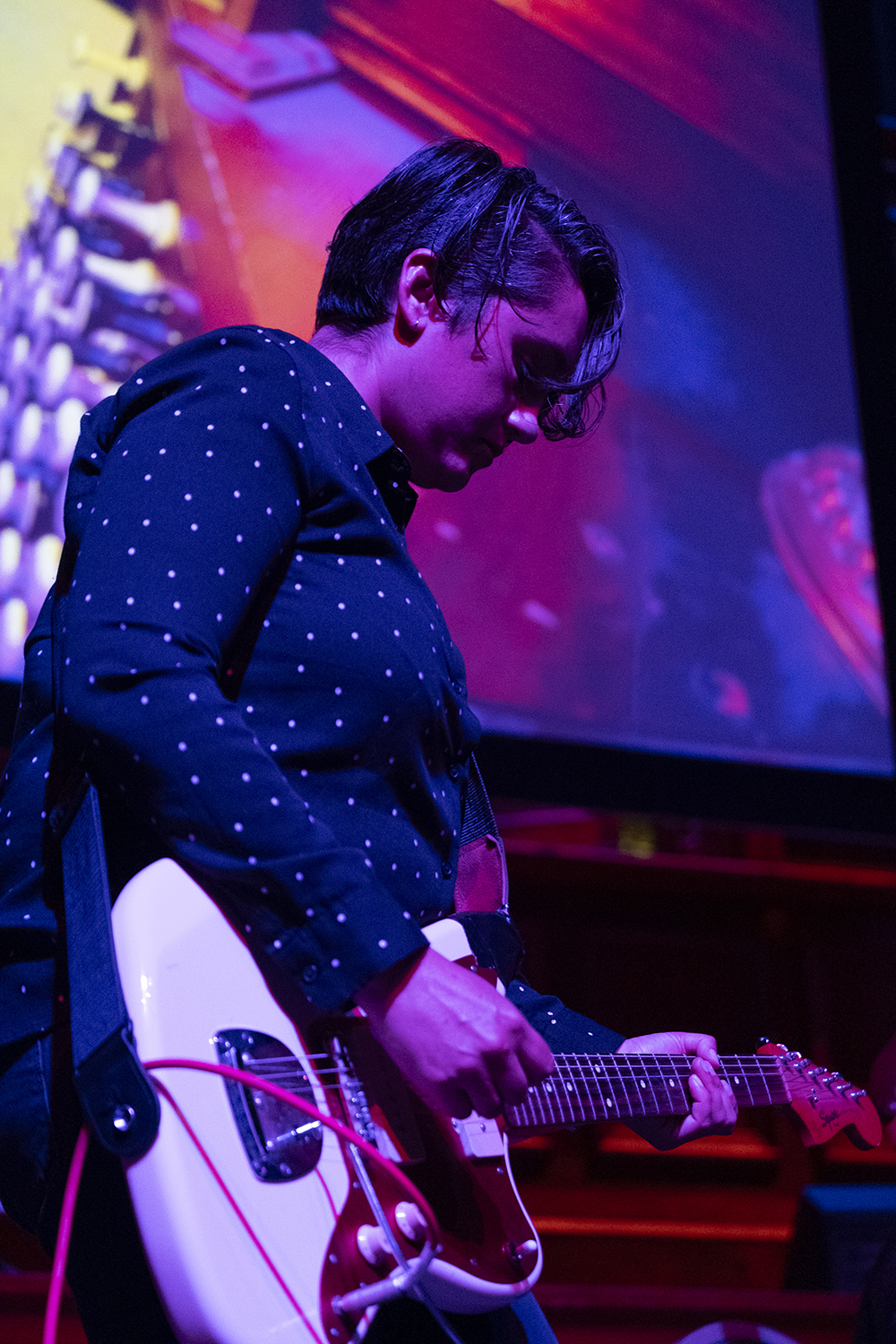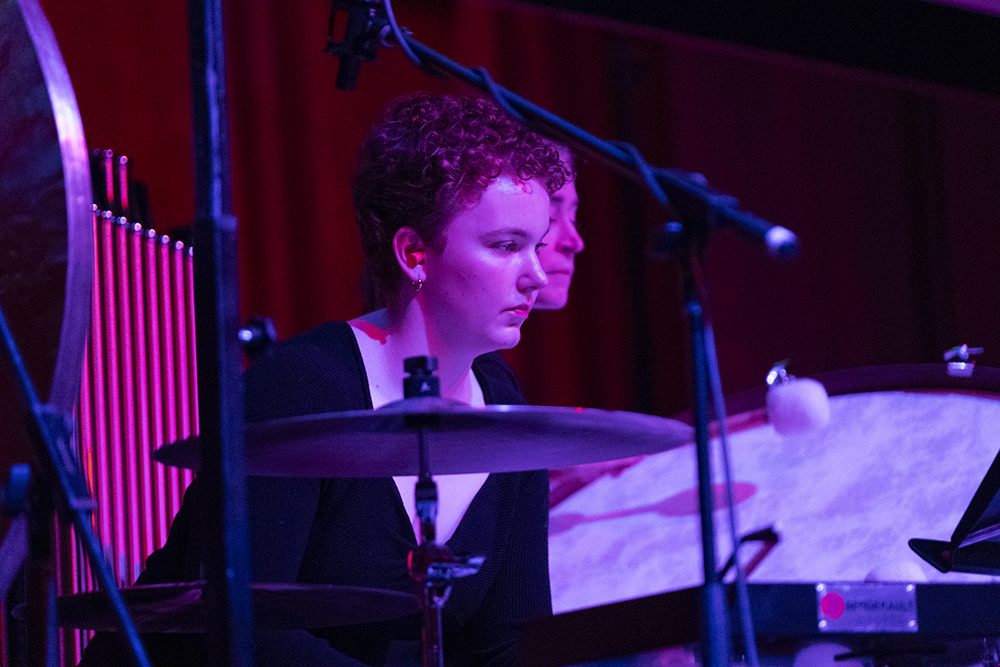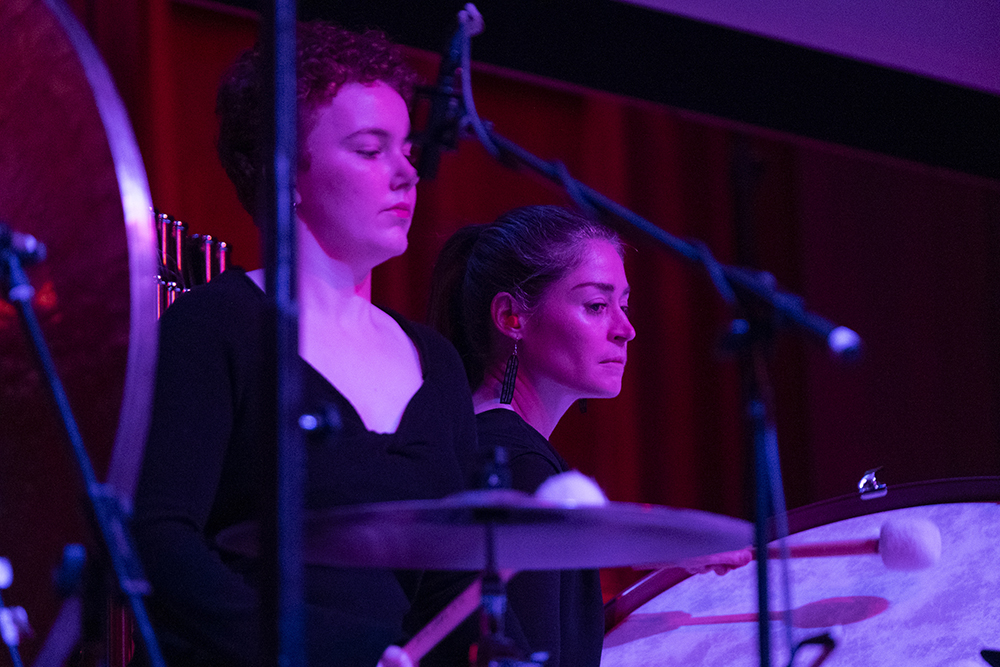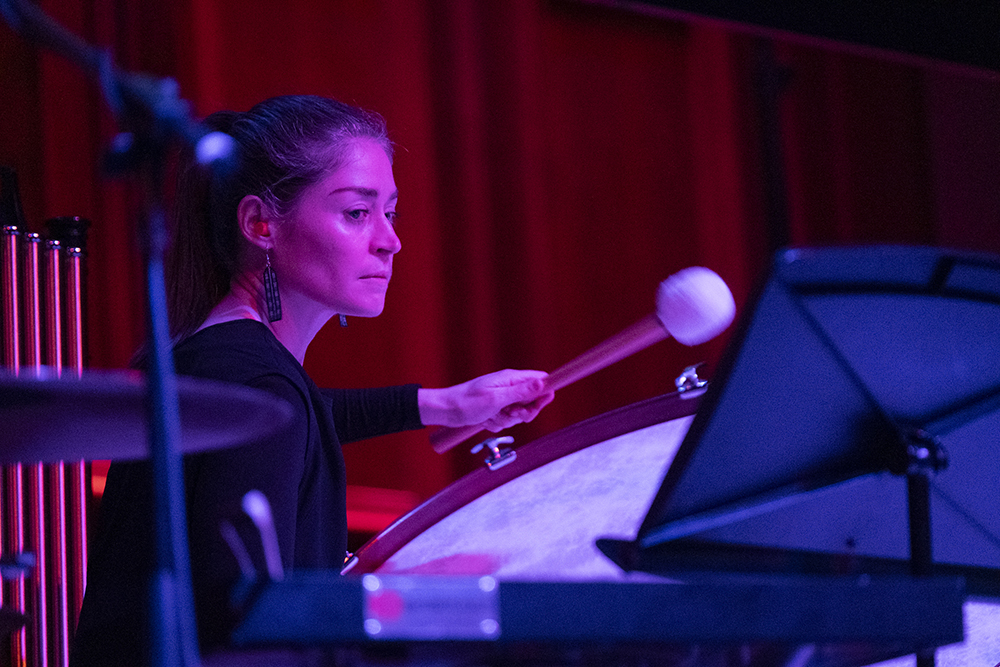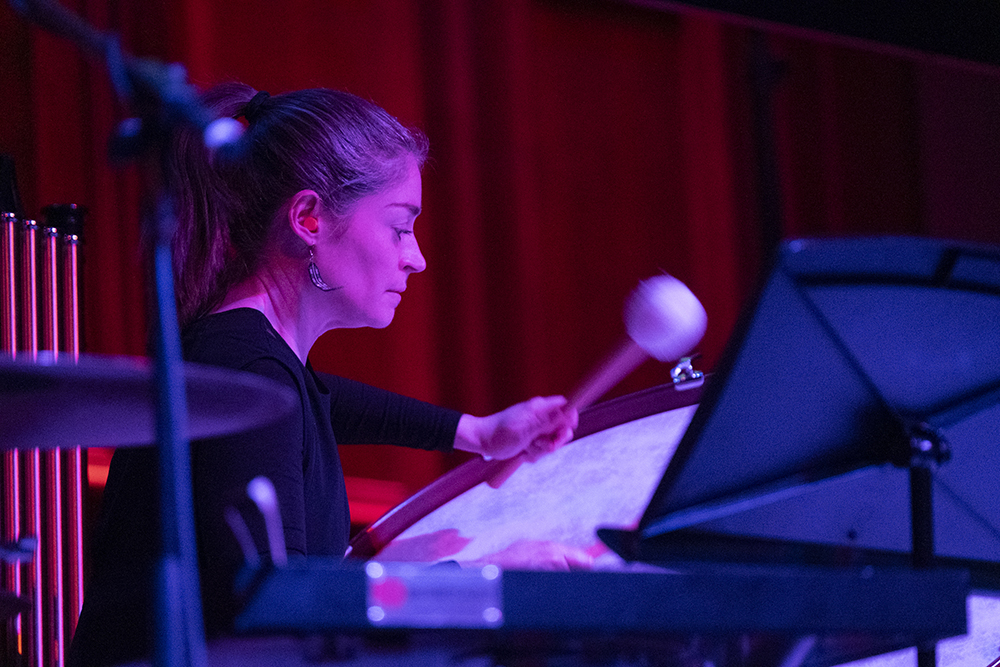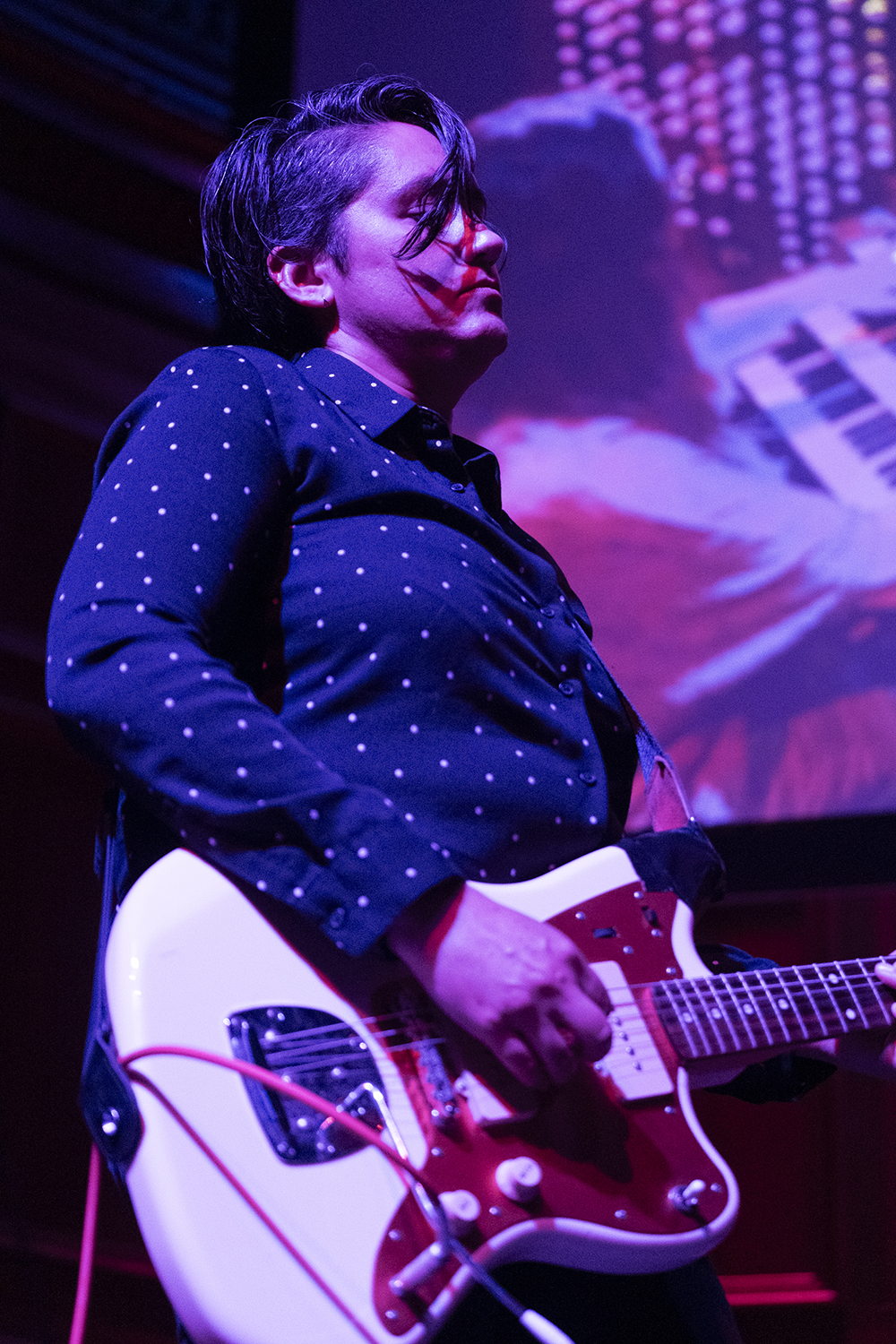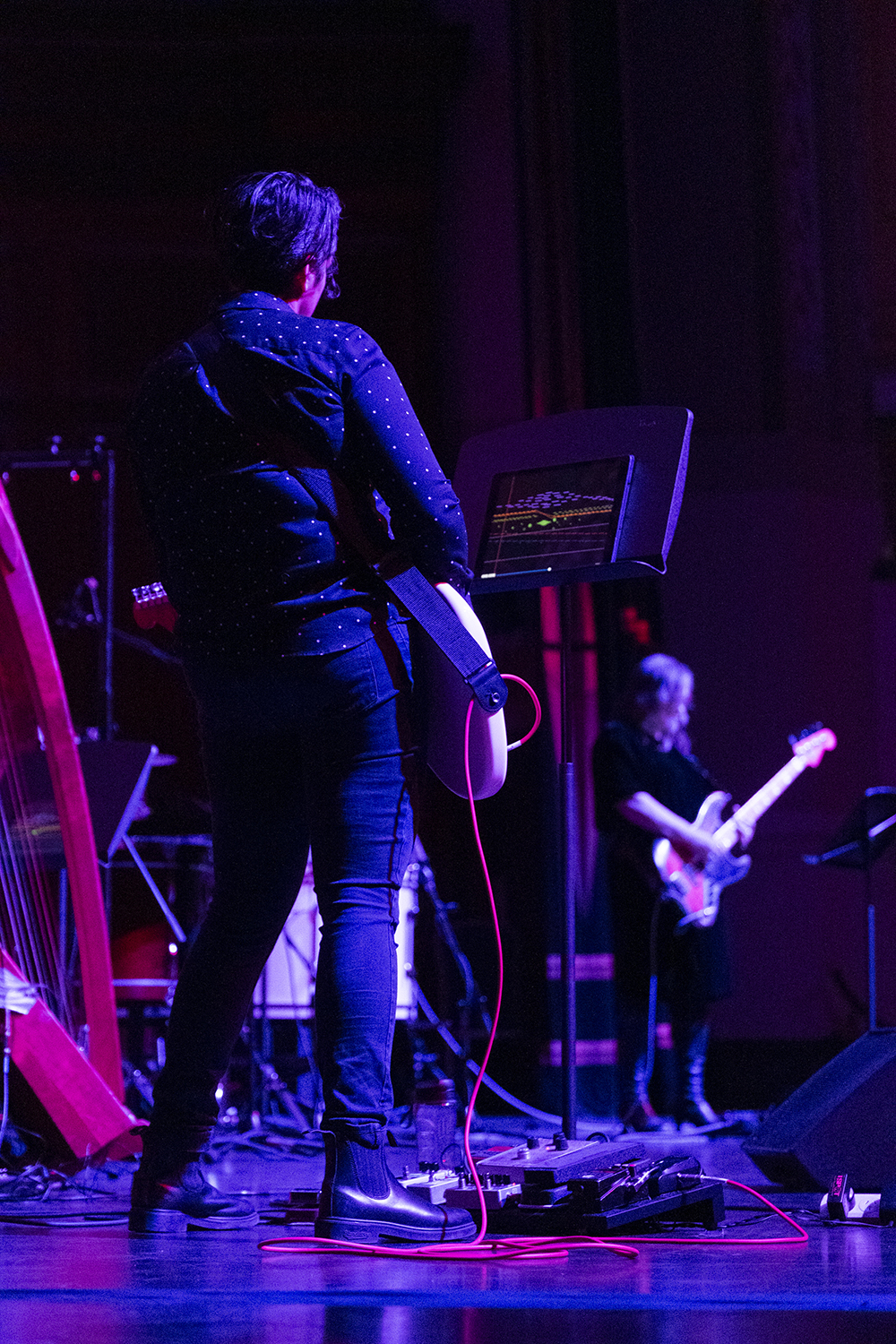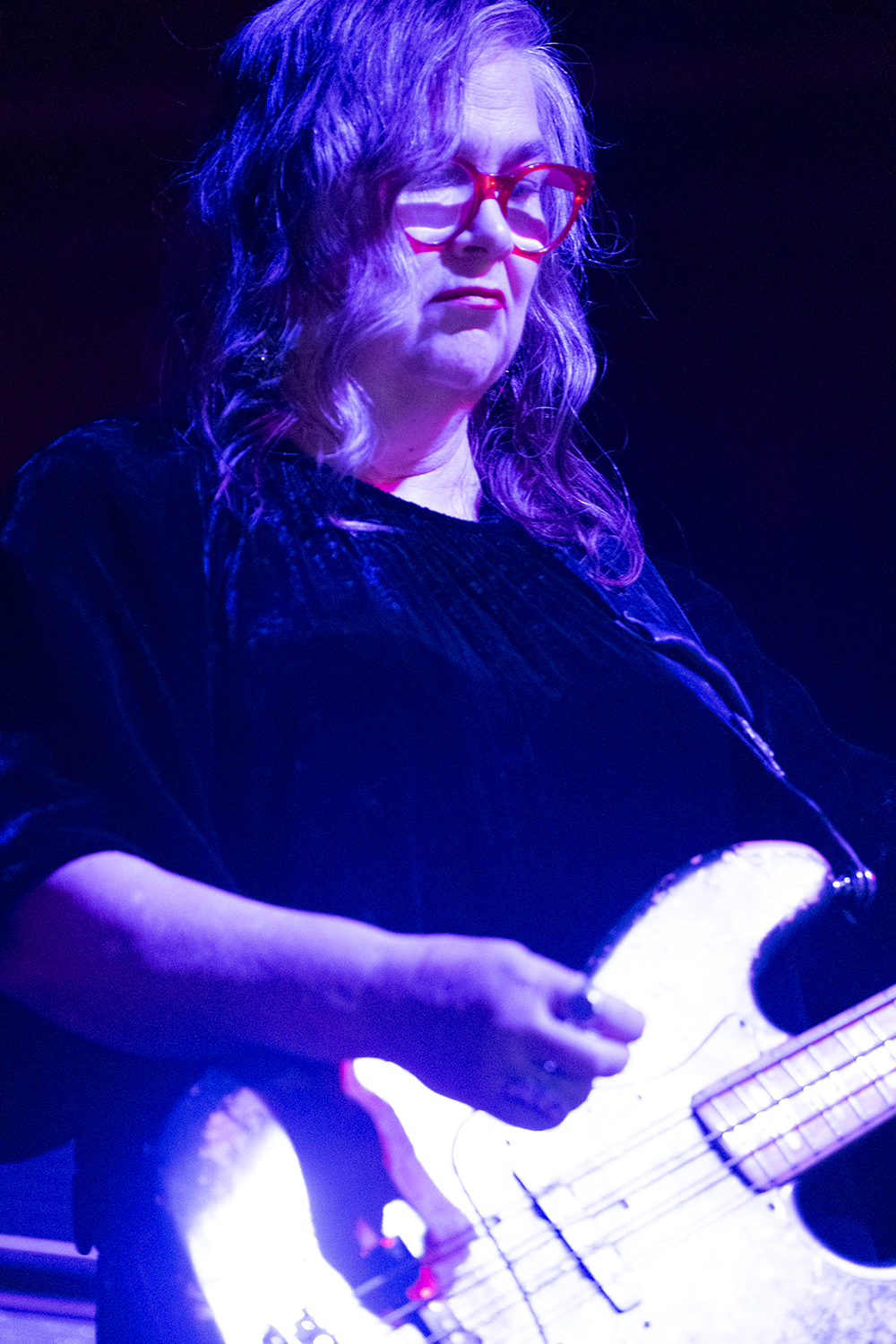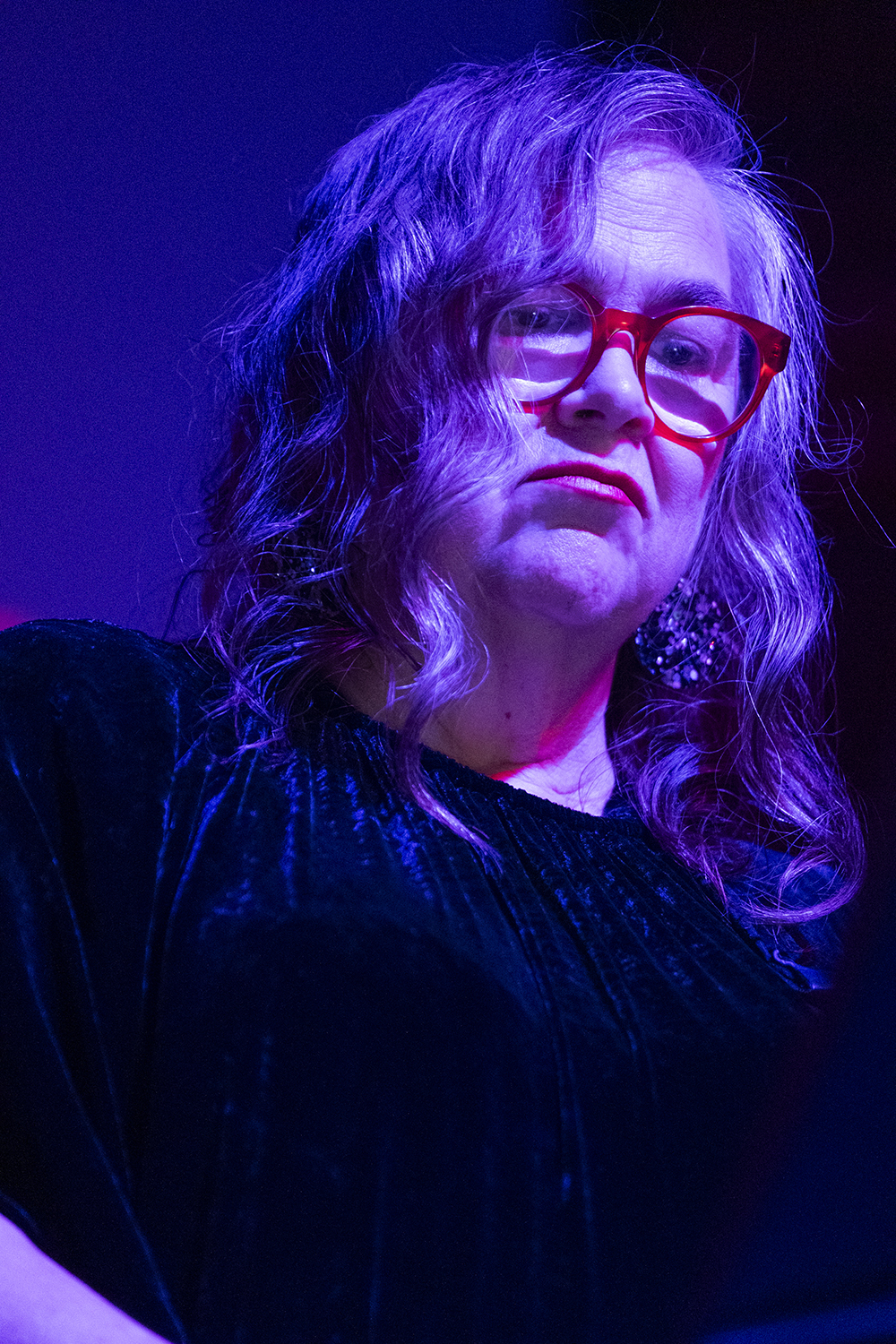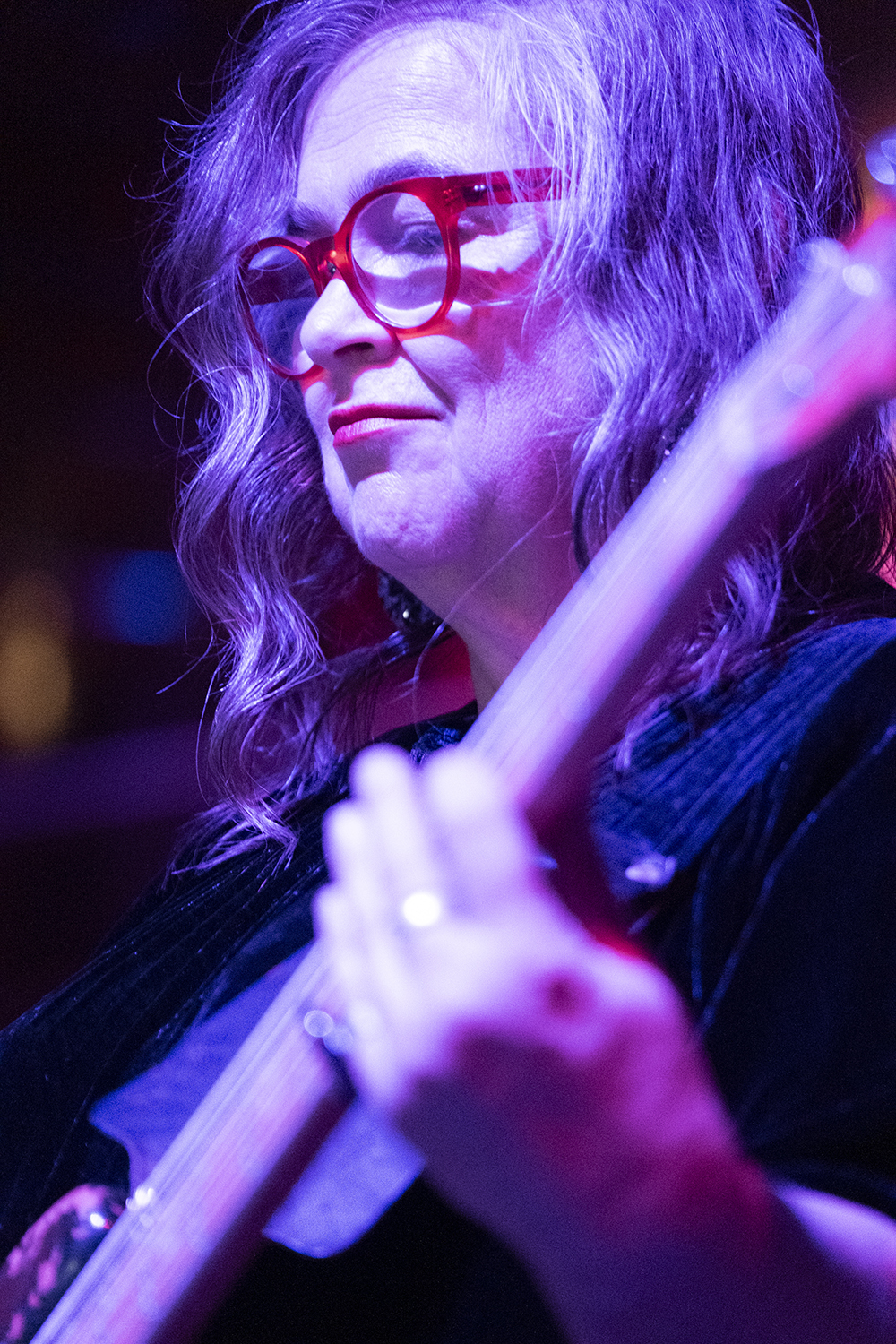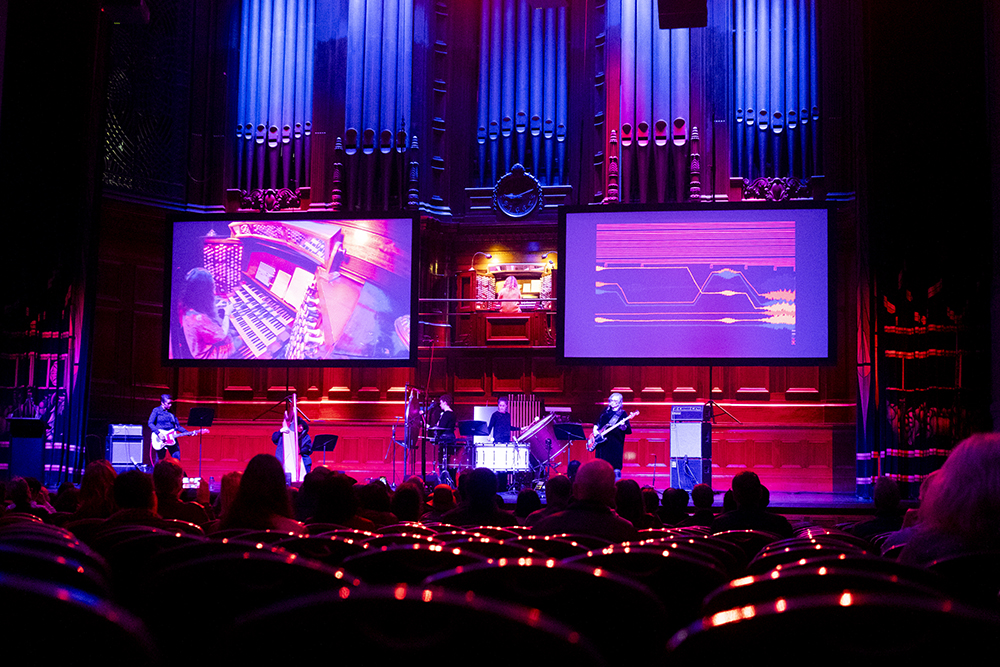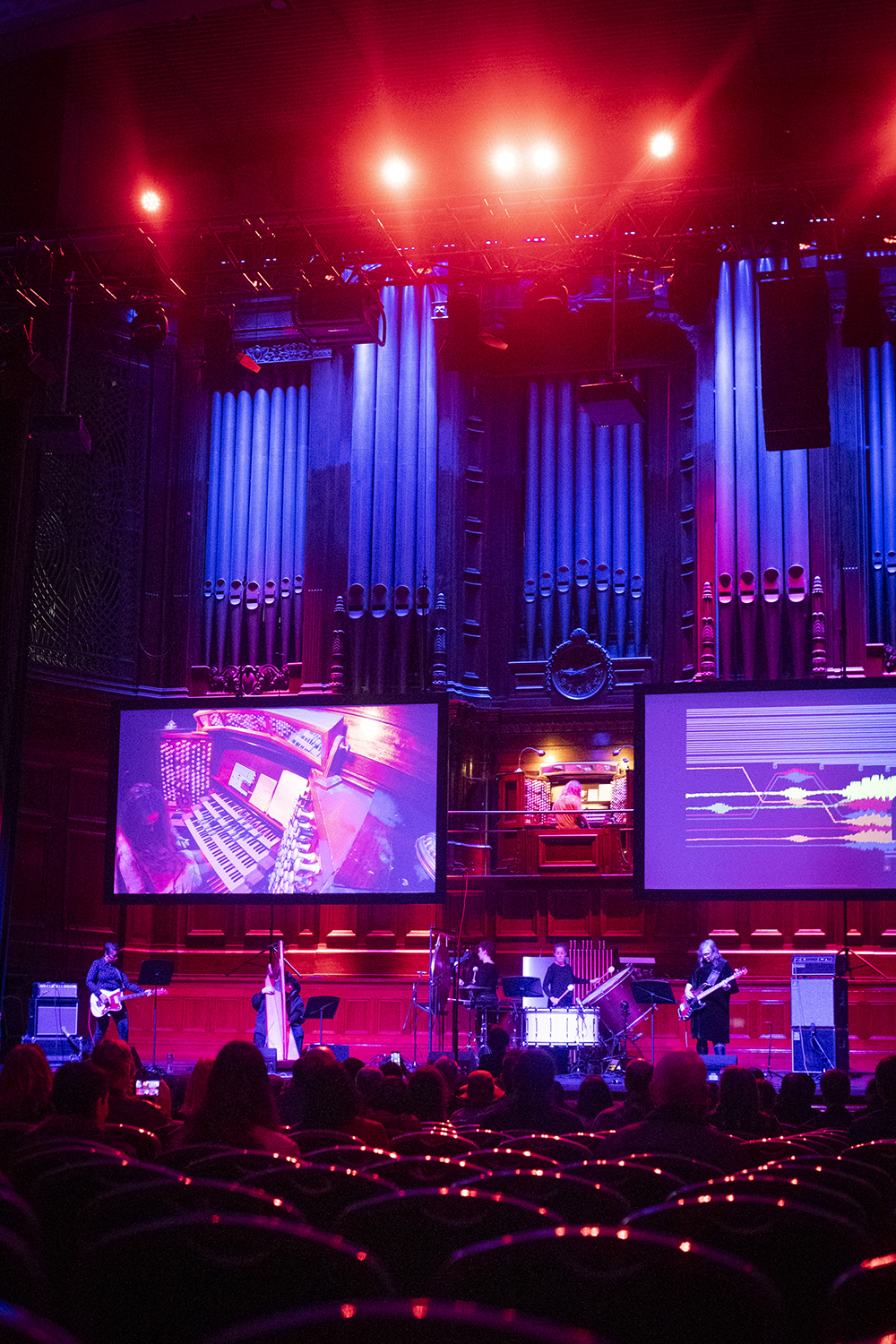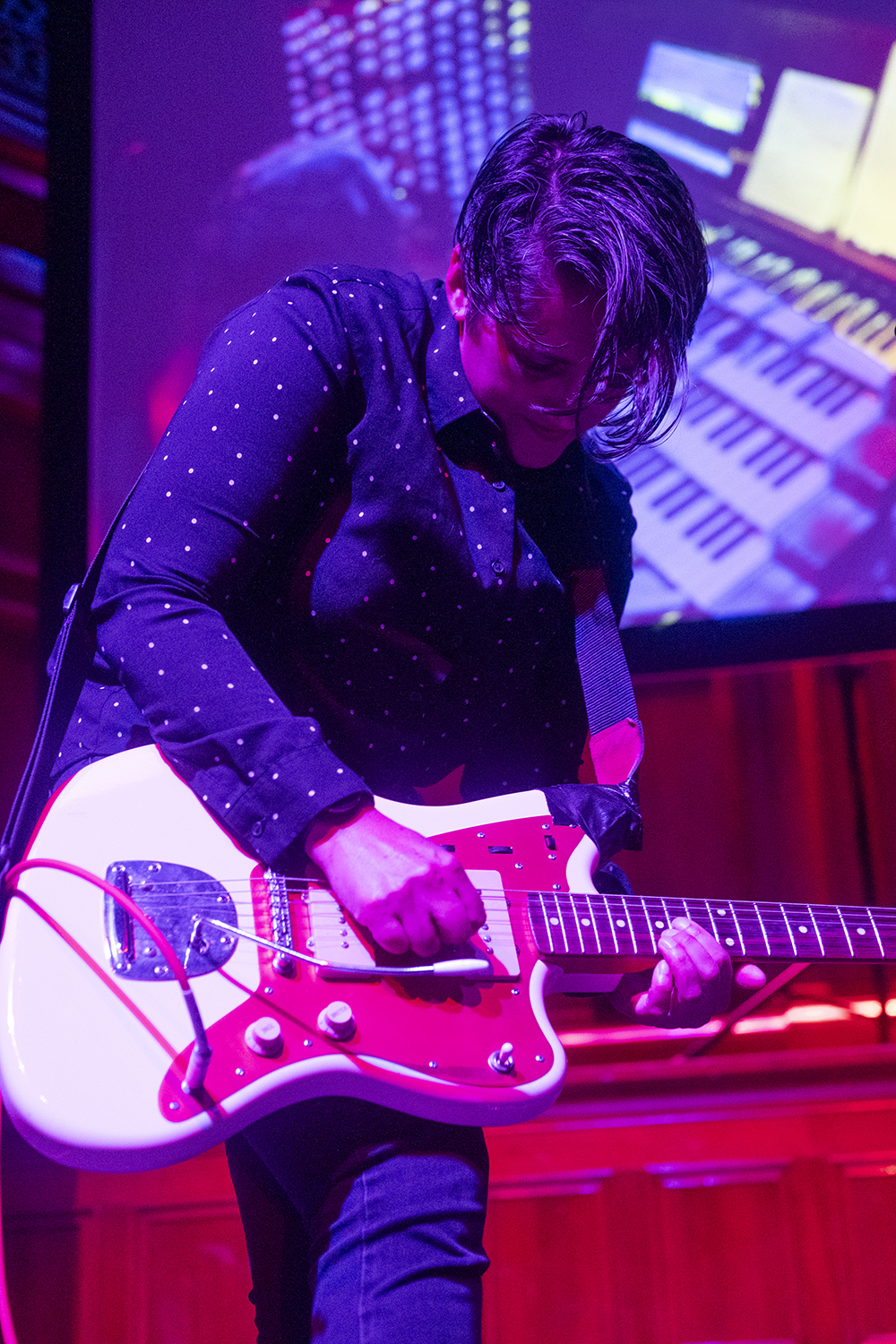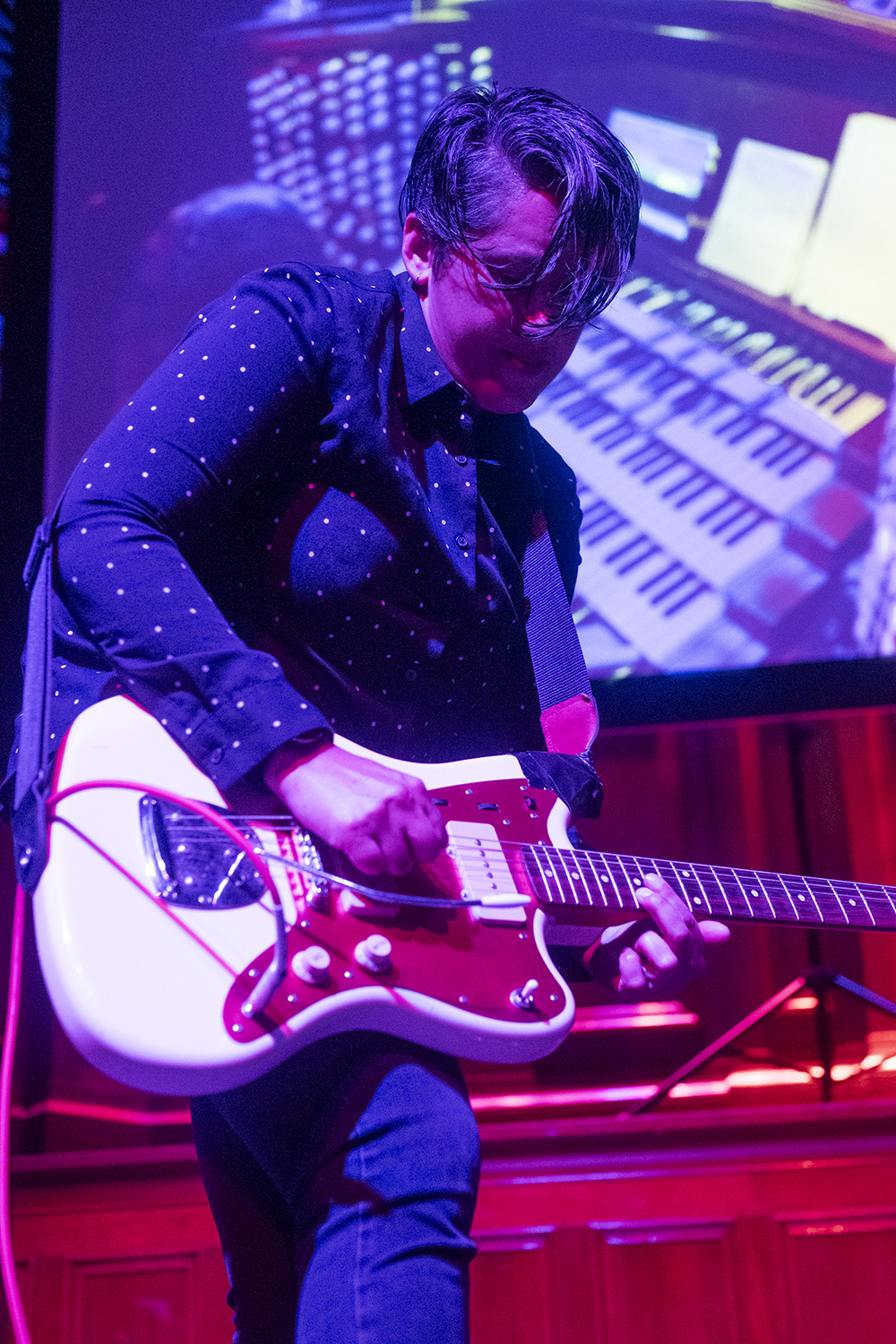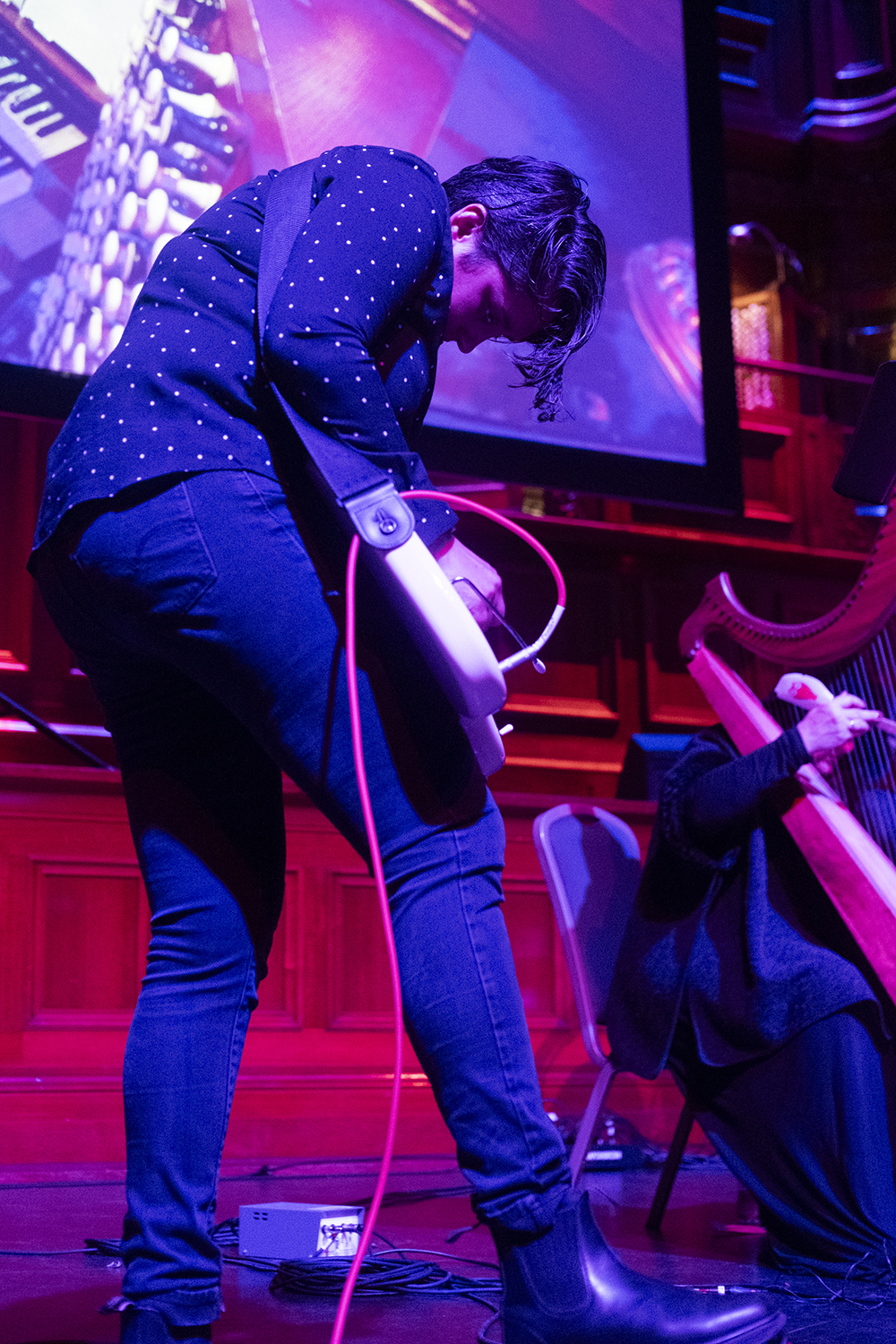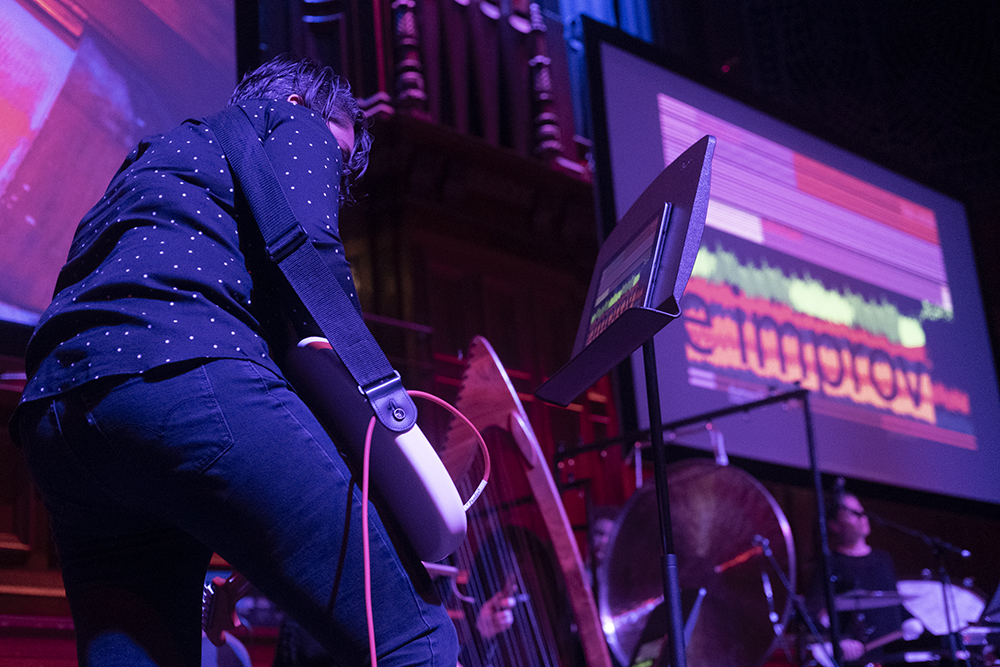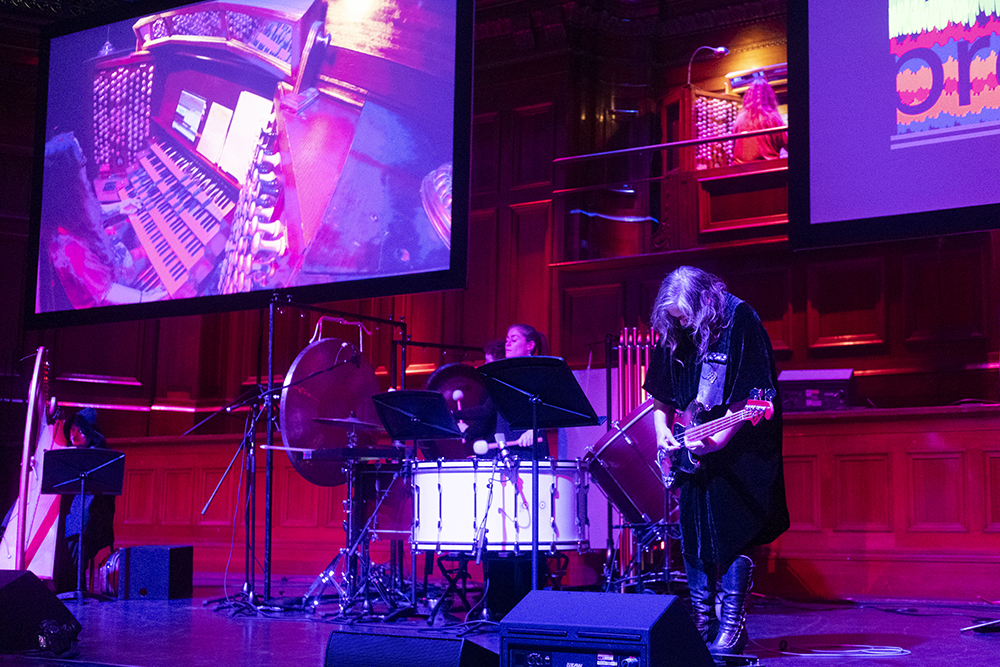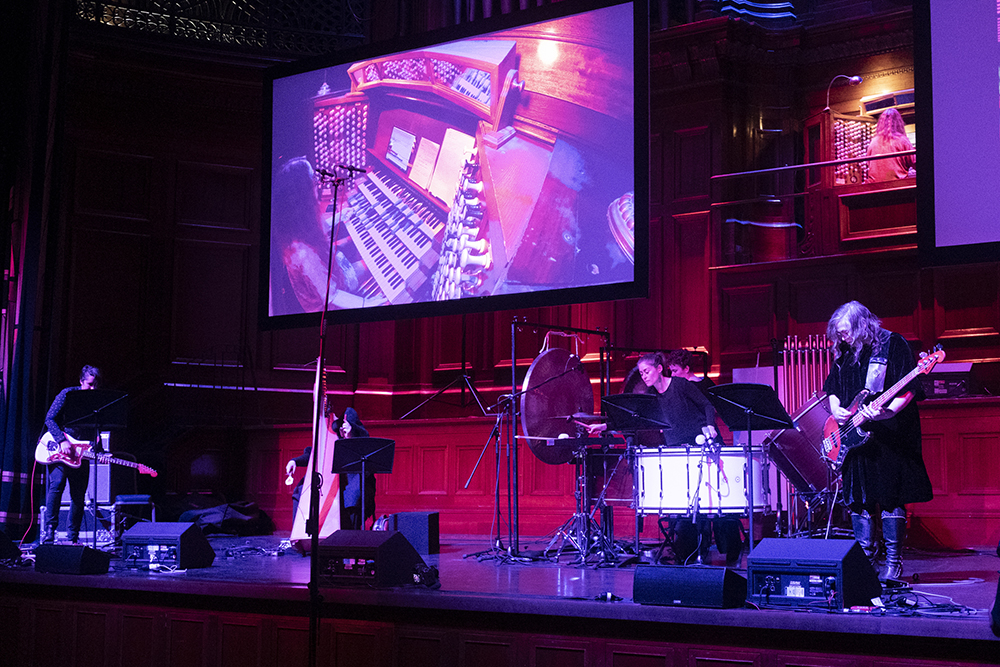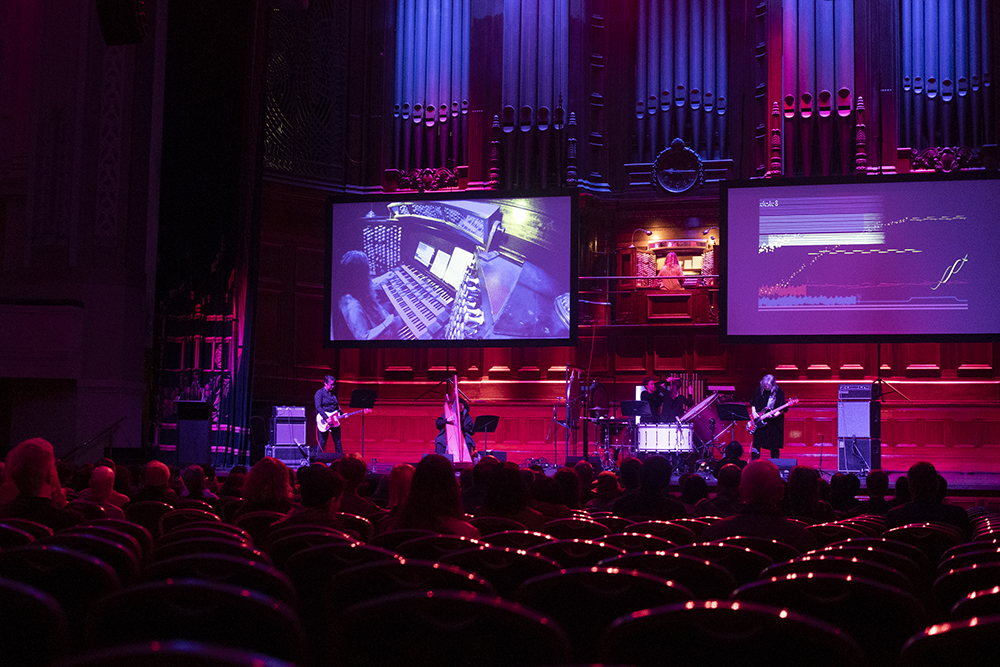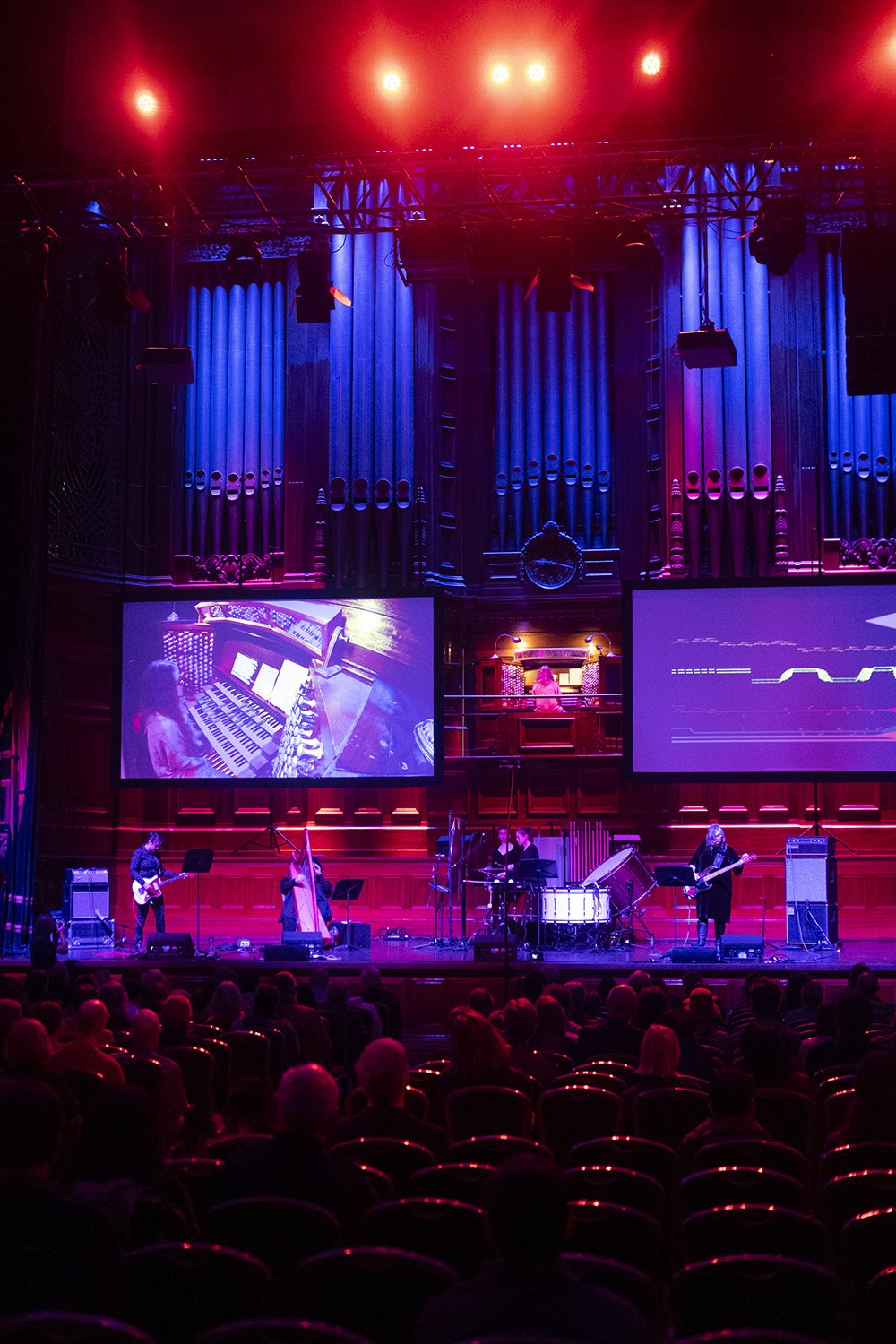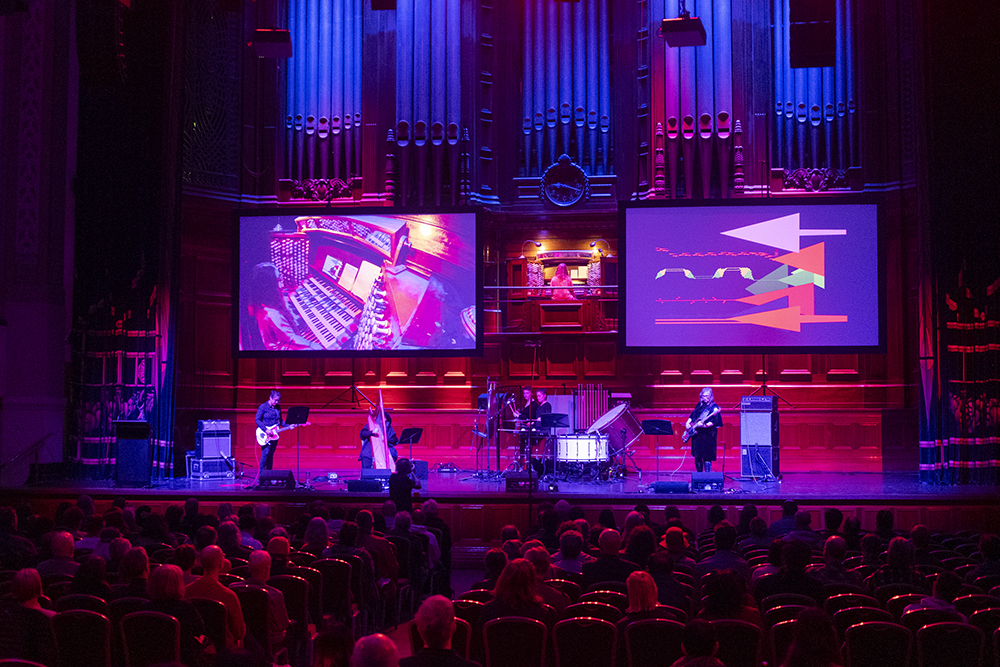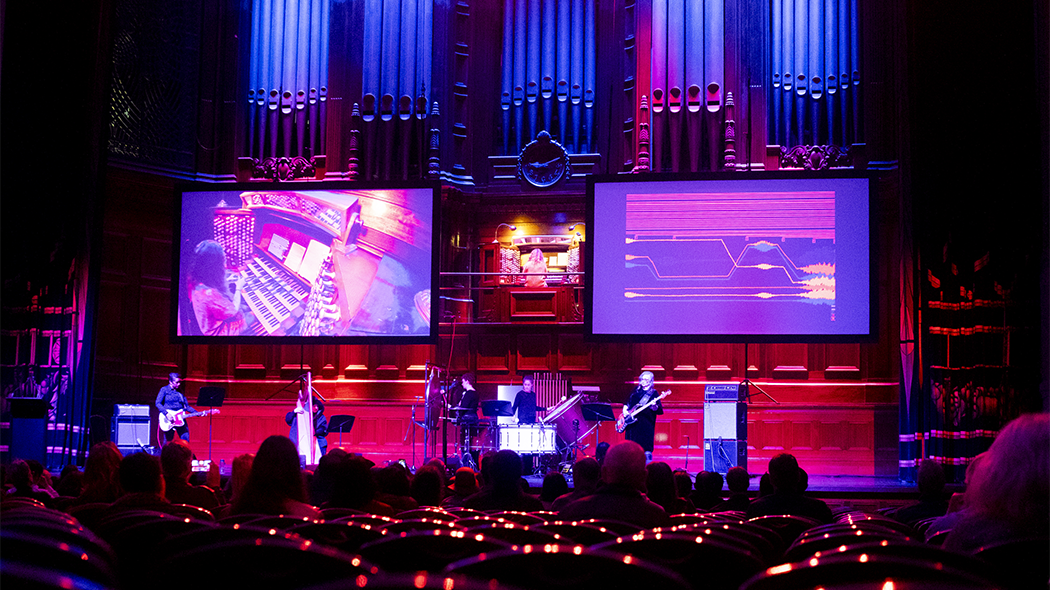
Review: Cat Hope’s Voluminum at Melbourne Town Hall
Cat Hope’s Voluminum at Melbourne Town Hall
Thursday, November 30, 2023
The Melbourne Town Hall is a wondrous building. The main auditorium, with its giant green glass hanging lights, classical ‘etched’ murals, and magnificent pipe organ, is voluminous. Cat Hope’s Voluminum concert, a free show held there last Thursday night, fairly shook the place to its foundations.
Cat Hope is an erstwhile Perth musician, prominent on the WA New Music scene throughout the nineties, noughts, and teens. Her ensemble, Decibel, formed in 2009, comprised a who’s who of Perth avant-garde players. She relocated to Melbourne some seven years ago to take up a position as professor of music at Monash University but still makes the odd foray west, notably for the premiere of her opera Speechless at the 2019 Perth Festival. She’ll be in town next week for a Decibel show.
The Voluminum program celebrated the centenary of Hungarian avant-garde composer György Ligeti. It comprised two pieces: Ligeti’s seminal solo organ work Volumina (originally 1962, this version 1966), credited with bringing the pipe organ back into the modern musical domain; and the premiere of Hope’s major new work, Voluminum.
Ligeti is probably best known from Stanley Kubrick’s films. He provided the soundtrack for the stargate sequence in 2001: A Space Odyssey (the weird bit at the end), as well as The Shining’s infamous blood-soaked lift-foyer and maze chase sequences. Remember them? Among the most challenging and scariest scenes in any film, ever. That guy. We are talking difficult music here, not for the faint-hearted or those hooked on harmony.
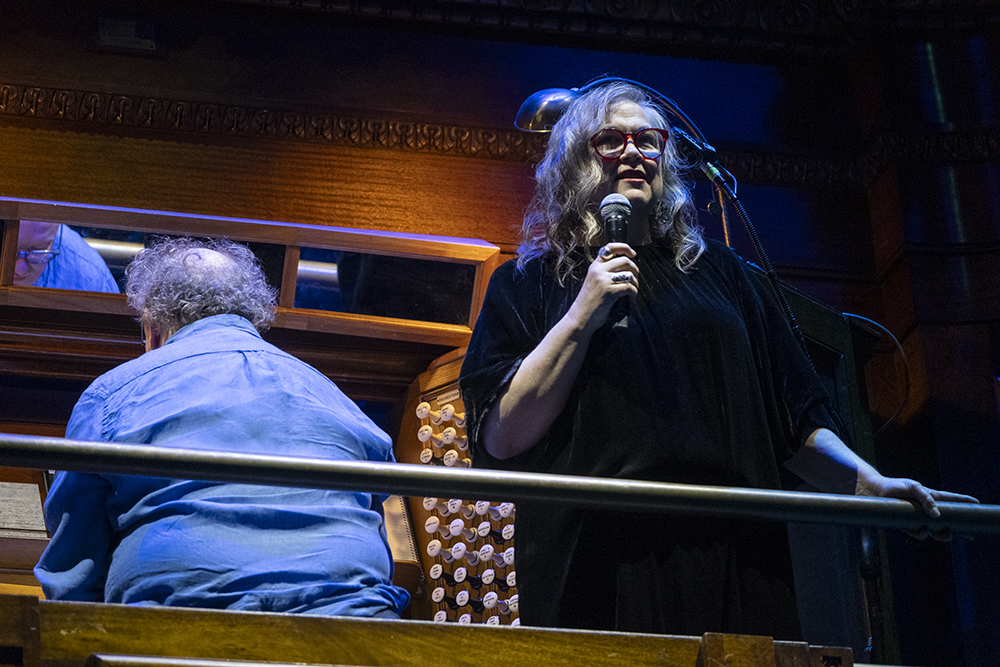
Cat Hope
The audience arrived slowly, with half of them arriving after the scheduled start time. There would have been maybe 250 people, a respectable room for a new music show, even in that most musical of cities. They were the usual avant-garde mix of tatterdemalion bohemians, international students, and George Smiley types, joined at the last minute by a rush into the dress circle of stylish hipsters.
In his enthusiastic intro, Miles Brown, curator of the City of Melbourne's music program, spoke about his love of Ligeti and Cat Hope’s pitch to mount the show (it took him a nanosecond to agree), then explained the format. A key element was the projection: two screens, one focused on the keyboard of the now computerised pipe organ, the other projecting in real time the animated graphic score. Both were vital to the show's impact.
As Cat Hope explained, the Volumina score was the first graphic notation she ever saw back as a student—it inspired her to adopt a similar approach when she turned her focus to composition in the late noughts. Instead of notes on staves, it comprises coloured lines and shapes on an open page. Each instrument has its own colour, while the lines, squiggles, and elongated triangles represent different tones, textures, timbres, and effects. A sustained note is a straight line; a crescendo is a broadening triangle; a detuning guitar is a broad downward swoop. Get the picture? Literally, it was an unfolding abstract drawing.
Volumina was performed by Stuart Smith, head of Classical Music at the WA Academy of Performing Arts, with Hope assisting on the stops. An accomplished organist, Smith has performed this stunning piece in many concerts the world over.
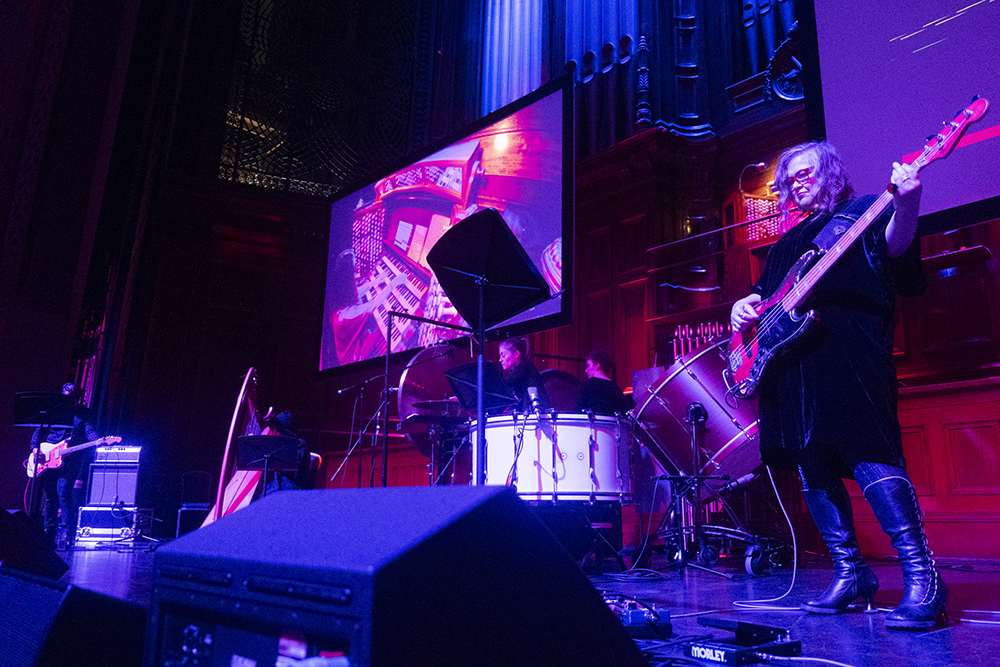
Cat Hope
After an extended silence, with Smith sitting dead still, he sprang into loud life with a crashing (dis)chord. His forearms, laced at the fingers, were held down across the length of the second (of four) keyboards. For the next fifteen minutes, thanks to the first screen, we watched enthralled as his fingers flew up and down the keys, sometimes sustaining long single notes, sometimes held almost (but not) still on intricate, slowly modulating ‘chords’ (unlike any you’ve ever seen or heard), at others racing along the keys in what looked like jump-cut motion. Mesmerising to watch and stupendous to hear, it sat at the very limit of listenability. Discord reigned and rained down upon us, only to resolve in a single whistling note, held into silence.
After taking their bow, Hope relocated to the lower stage to take up her electric bass guitar, while Smith was replaced at the organ by Lisa MacKinney.
Hope’s homage to Ligeti, Voluminum, was performed by the extended, all-female Super Luminum sextet. The usual duo—MacKinney and Hope—were joined on the lower stage by Bonnie Mercer (electric guitar) and Mary Doumany (harp), with Louise Devenish and Grace James (percussion). Before beginning, Hope reiterated how important Ligeti is to contemporary music and how influential he has been on her own work.
Voluminum began with a sustained bass note played on the organ pedal. Gradually, one at a time, the other instruments joined in. A sustained chord on the bass guitar was eventually followed by a feedback chord on the electric guitar, then a subtle roll on one of the three massive orchestral bass drums. A mallet roll on the giant gong was doubled as the other percussionists abandoned the drum, then left to rumble as she moved on to caress the rim of a cymbal with a violin bow. Finally, a shrill descent of brittle notes on the amplified harp brought the full ensemble together.
Complex and challenging, at every level on every instrument, all the so-called conventions of playing were pulled apart. Decorum was denied as the limits of each instrument were extended and the possibilities explored. Six pairs of hands danced across frets, keys, skins, metals, and strings. Riveting and primordial, they pushed the boundaries of tolerance into aporia, that moment of free-falling multiplicity the deconstructionists aspire to.
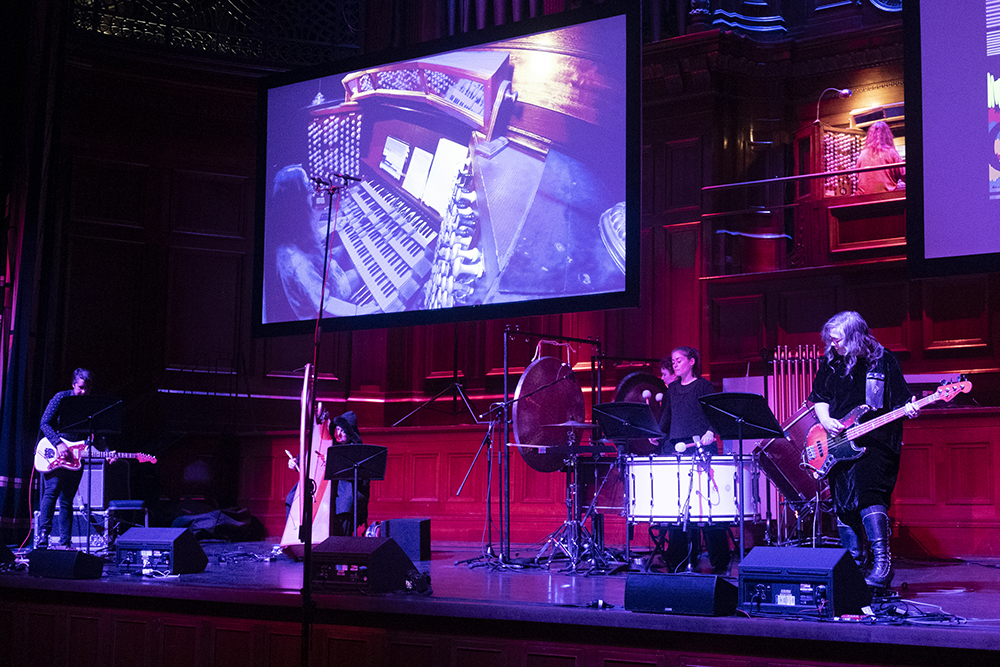
Cat Hope
One sequence the screen explained was the impossibly sustained organ notes. MacKinney placed a series of weights on different keys, then left them there to play out. If you couldn’t see what she was doing, you’d be forgiven for thinking she had fifty fingers.
For three quarters of an hour, many, many ideas shot up and ran over the top of each other as the coloured lines, swirls, and triangles moved slowly across the screen. Finally, the lines merged into a writhing colour field, and, reversing out in black, the words ‘Free Noise Improv’ appeared. Cacophony, a wall of noise. The building shook.
After this improbable fanfare, it all quickly quietened down. One by one the instruments faded back to silence. After a final flourish of feedback, her bass held up against her amp, Hope raised her fist into the air and directed the piece back into the opening organ bass note. What an invigorating ride!
Watching the graphic notation made all the difference. You could see where the music was going and were intrigued by what the various shapes could possibly mean. But once the musicians reached them, the images made perfect sense. The notation mapped the emotion of the music rather than the notes. True, you were left wondering whether the players knew what notes to begin with or if it were their whim while the composer merely (!) directed them up or down and set the emotion. There may have been additional notation that was too small for our auditorium eyes to read. But it worked in an intuitive, deconstructed way.
It was a delight for a change (at least for West Australian eyes) to see an all-female ensemble of virtuoso musicians tackling so superbly a complex piece of music, but not everyone was so bowled over by the piece itself. One sardonic older bloke who looked like he could have been Warren Ellis’ father (the same wild beard and hair, only greyer), wryly noted that he would have been impressed had he heard it on an album in 1967. But then, in 1967, he wouldn’t have been able to watch the graphic score, see the organ keyboard, or reflect on how Ligeti’s influence continues to resonate through the halls of experimental music. The rest of the audience were suitably stunned as they wandered out into the cool Melbourne night.
Cat Hope and Decibel are performing Drawing Sound in Space at The Rechabite on Wednesday, December 13. It promises to be another night of challenging new music, ripe for the wild at heart who enjoy being pushed to the edge.
IAN LILBURNE
Photos by Mathew Ellery

